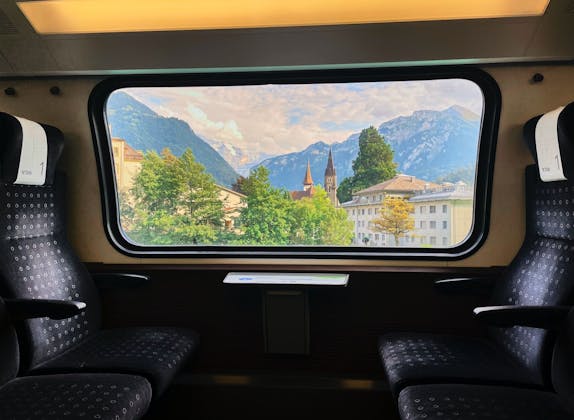
Saver Day Pass SBB - starting at 29 CHF
Validity: All day
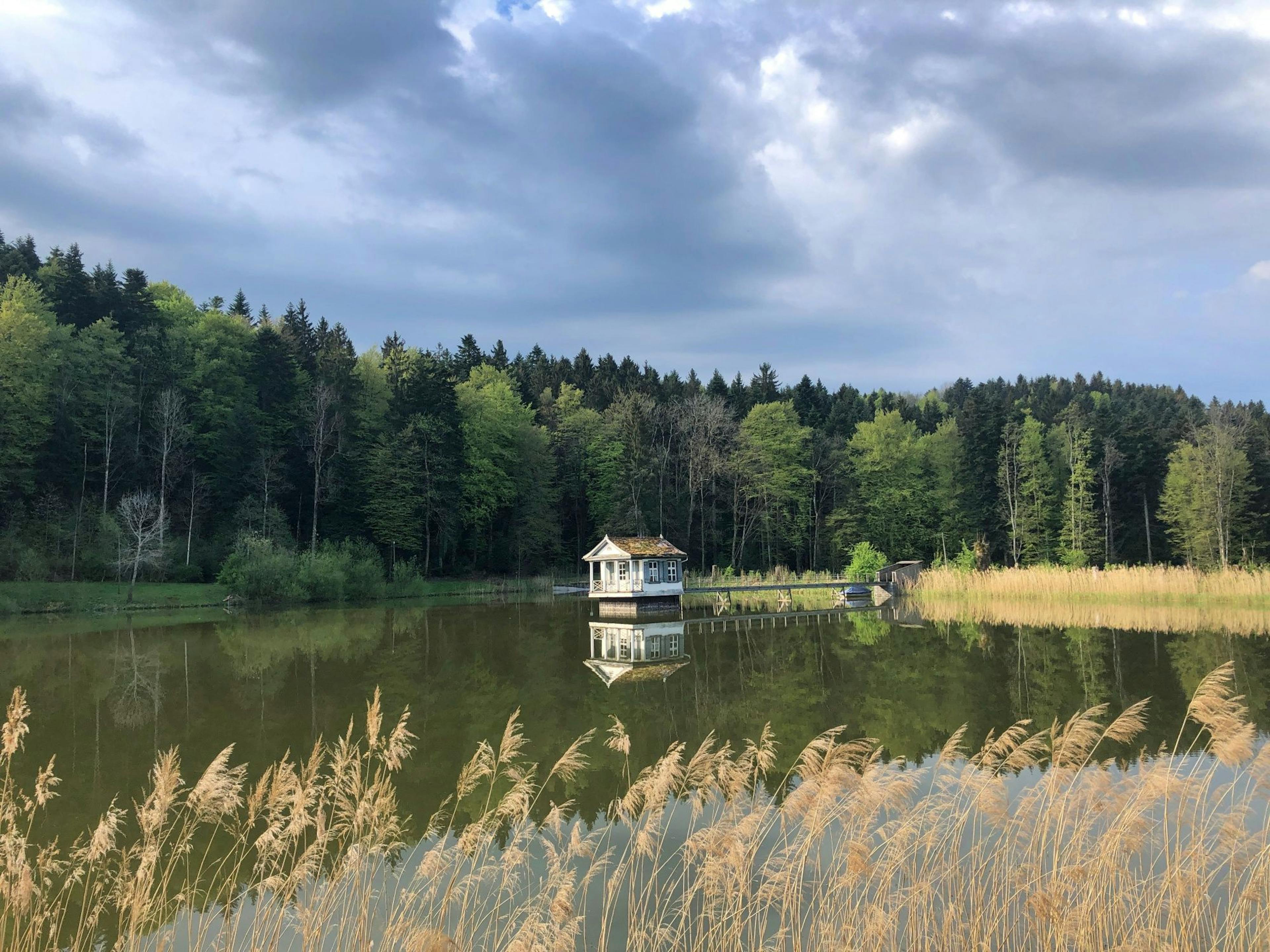
With two full weeks in Switzerland, you have more than enough time to explore the country in all its beauty. Within 14 days in Switzerland, you have several options to plan your perfect itinerary. Our selection of six itineraries will help you organise your trip. It shows you different options that are all doable in 14 days starting either in Zurich or in Geneva. All of the following itineraries are also adaptable so that you can start along the way or in a different city. This way, you can make the most of your time in Switzerland.
Wow, you’re planning a 14-day trip to Switzerland? That's fantastic! Even though Switzerland is quite a small country, there's definitely plenty to see in two weeks. With such a diverse range of landscapes, you’ll be glad to have two whole weeks to explore this wonderful country. When planning your trip to Switzerland, the following itineraries will help you out.
They are all doable in fourteen days and can start from Zurich or Geneva. However, if you prefer to begin in a different location, you can easily adjust your trip accordingly. Zurich is very well connected and can be reached from any other city in Switzerland. The same goes for Geneva if you want to start in a city in the western part of the country.
Some itineraries end in Geneva or pass through cities nearby. So if you're planning to travel in from the west, you can simply tweak the itinerary to suit your preferences.
You’ll notice that we’re talking about traveling by public transport rather than by car. Most routes can also be done by car if you want to rent one during your stay in Switzerland. But with our extensive network of trains and buses, it’s really not necessary to travel by car.
Of course, the choice is completely yours. But if you’re traveling by train, we recommend buying a rail pass. Since you’ll be using public transport a lot, an Interrail, Eurail, or Swiss Travel Pass will make your travels a lot easier.
And if you have more than two weeks and see an itinerary you like, you can easily extend it by spending an extra night in a few places.
Happy planning!

Highlights on this route:
Leave Zurich early in the morning and take the train to Lucerne. Store your luggage either at the train station or in your accommodation, then catch the next train to Arth Goldau. From there, the Rigi Railway—the first mountain railway in Europe—will take you in a 45-minute ride to the Rigi Kulm mountain station.
If the Rigi isn’t shrouded in clouds, you'll have a spectacular view of the Alps, Lake Lucerne, and other surrounding lakes. Just follow the signs to the viewing point after you get off at Rigi Kulm.
Once you’ve taken enough photos, you can either take a break at the restaurant, ride the train down to Vitznau, or go for a hike. With over 120 kilometers of hiking trails, you'll have plenty of choices.
Upon your arrival in Vitznau, the passenger ship to Lucerne will be waiting for you. Keep your camera ready, as the ride offers stunning scenery and even more breathtaking views.
Back in Lucerne, you can spend the rest of the evening exploring the city or find a cozy spot by the lake to relax.
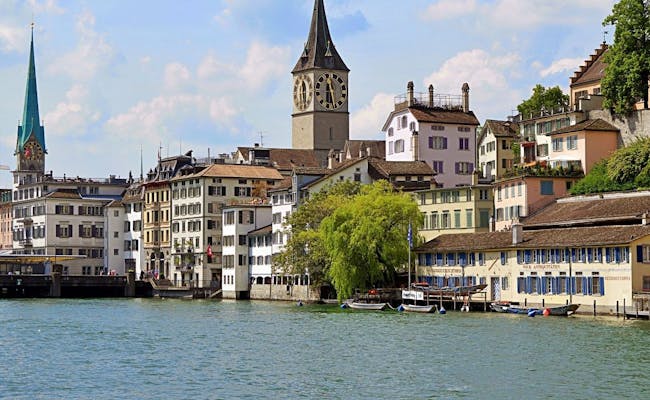
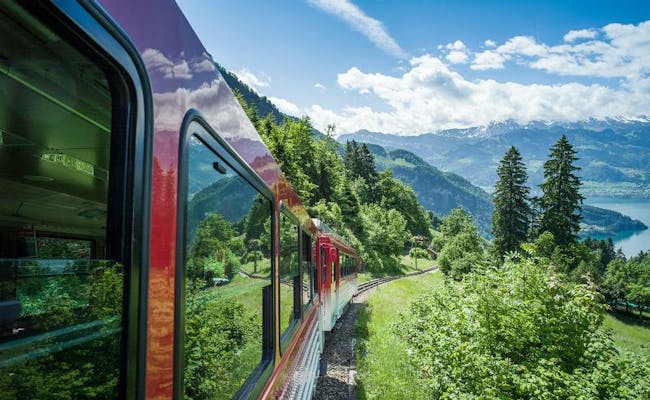
Lucerne has an incredible amount to offer. One of the most exciting excursions is the ride on the world's steepest cogwheel railway to Pilatus, Lucerne's local mountain. This railway only operates in the summer from Alpnachstad, while the cable car from Kriens runs year-round to Pilatus.
Speaking of mountains: Titlis is another landmark in the region worth a visit. From Engelberg, you can reach the summit using two gondolas, one of which is the world's first revolving cable car. So, get ready for an impressive 360-degree view.
For an easy hike that includes a ride on a rocket-like elevator standing 152.8 m tall, you can take a boat or bus to Kehrsiten-Bürgenstock.
Don’t forget about the Stanserhorn, a mountain near Lucerne that you can reach via a modern double-decker cable car. It’s best to take the boat to Stansstad. There, you switch to the cogwheel train for the first leg and take the open-air gondola for the last stretch to Stanserhorn.
On this free day, you could also theoretically take a trip to Interlaken. Leave Lucerne in the morning with the GoldenPass Line, spend the day exploring the picturesque region around Interlaken, and return to Lucerne in the evening.
Another great way to spend the day around Lucerne is a trip on Lake Lucerne. Several steamers and passenger boats operate on the lake, taking you on a scenic outing.
As you can see, Lucerne has a lot to offer on a sunny day. But in reality, the weather isn’t always so promising. In this case, we’ve got a few cool indoor options for you.
For one, there’s Aeschbach’s Chocoworld in Root. The bus ride there takes about 30 minutes. Nothing brightens up a rainy day quite like delicious chocolate, right?
In Hergiswil, not far from Lucerne, you’ll find what the Swiss affectionately call the "Glasi." The Hergiswil glass factory takes you through the glass-making process, lets you watch the pros at work, and even gives you the chance to try glassblowing yourself. When was the last time you made your own glass?
Another option for bad weather is the Transport Museum in Lucerne. As the name suggests, this museum revolves around means of transport. From bicycles to astronautics, it covers it all.

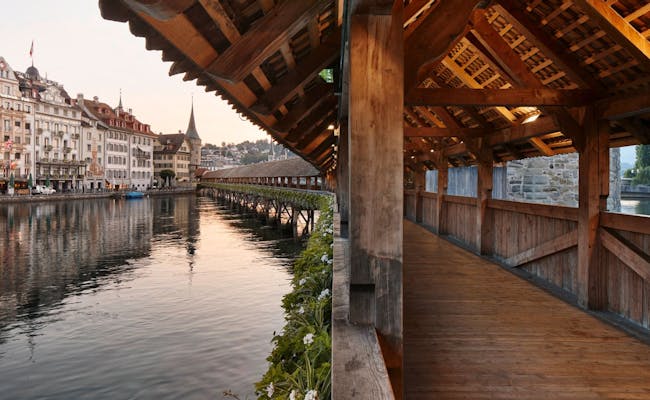
If you're visiting Switzerland between April and October, you're in for a treat. Provided you don't leave Lucerne on a Monday, you can take the Gotthard Panorama Express to travel over the Alps to Ticino.
On the first leg of the journey, a steamship takes you across Lake Lucerne to Flüelen in a three-hour ride. There, the panoramic train awaits to take you to Lugano.
Before the Gotthard Base Tunnel opened in 2016, this was the only way to reach Ticino by train. Now, since the longest tunnel in the world opened, the old tunnel is only used for tourism purposes.
You’ll arrive in Lugano around 4:00 PM, giving you plenty of time to explore the city and its surroundings. When you’re ready, hop on the train to Locarno, your home for the next three nights.
As you’ll be spending the next three nights in the canton of Ticino, you’re entitled to the fantastic Ticino Ticket. You’ll receive it when you check in to your accommodation. This handy guest card allows you to use public transport across Ticino for free and gives you various discounts on other attractions and activities.
Get ready to explore the Italian part of Switzerland in all its glory. With so many activities to choose from, you won't be bored today.
First, we recommend heading to one of the two river valleys: Maggia or Verzasca. Both are great for hiking, spending time by the river, or taking a refreshing dip. Don’t forget to pack your picnic! Both valleys offer countless spots to take a break. One of our favorite spots is right under the famous stone bridge in Lavertezzo.
If you prefer calmer waters to the cold mountain streams, consider heading to Lake Maggiore or Lake Lugano. Both lakes are stunning and provide more photo opportunities than you can imagine.
Other popular destinations in Ticino include the inspiring artsy town of Ascona near Locarno and the city of Lugano further south.
If you want to brush up on your knowledge of Swiss geography, check out Swissminiatur in Melide just outside Lugano. It’s a miniature version of Switzerland and showcases incredible attention to detail.
If you're one of those adrenaline junkies, at the end of the Verzasca Valley, there's the 007 Bungee. You might have seen this 220-meter jump in the James Bond film GoldenEye. If you decide to take the plunge from the dam, don’t forget to share your photo with us. We’d love to see it… 🙂
As you may have already noticed, this day is certainly not long enough to get everything done on the list. Good thing there’s always tomorrow.
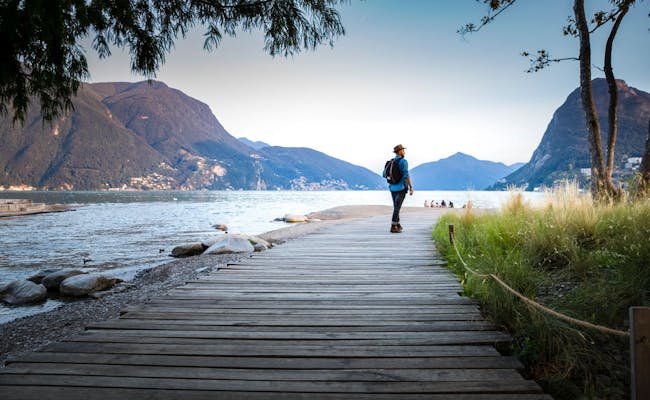

Knock yourself out doing whatever you missed out on yesterday. The list should be long enough to keep you busy for another day.
Alternatively, leave Switzerland and head to Italy for the day. Not far from Lugano lies the idyllic Como region, the place where George Clooney and other celebrities got married. If you’re curious to find out what Mr. Nespresso saw in this part of the world, today’s your chance.
The two main places we recommend visiting in the area are the city of Como and the village of Menaggio. Both are situated by the shores of Lake Como and will automatically make you take a step back and enjoy the laid-back atmosphere.
At the end of the day, head back to Switzerland and spend whatever time you have left hanging out in Lugano before moving on to Zermatt tomorrow.
You’re probably going to laugh now. But the station your train to Domodossola leaves from is called Locarno FART. Unfortunate name, we know. It’s short for Ferrovie Autolinee Regionali Ticinesi and translates to “regional railway of Ticino”.
The ride to Domodossola lasts just under two hours. It might be the slowest train you’ve ever been on but chances are you won’t even notice time passing by.
The landscape is beyond stunning from start to finish. As you travel through the impressive Centovalli region – which stands for one hundred valleys – you’ll pass several charming villages with old stone houses, ride across tall viaducts and even catch a glimpse of a waterfall or two.
Enjoy the views because from Domodossola to Brig, you’ll be spending most of the time in a tunnel. That’s ok though because the ride from Brig to Zermatt is part of the Glacier Express – another scenic train ride.
Once you arrive in Zermatt, spend the rest of the day strolling through this little town and enjoy the sight of the mighty Matterhorn. Provided it’s not veiled in clouds.

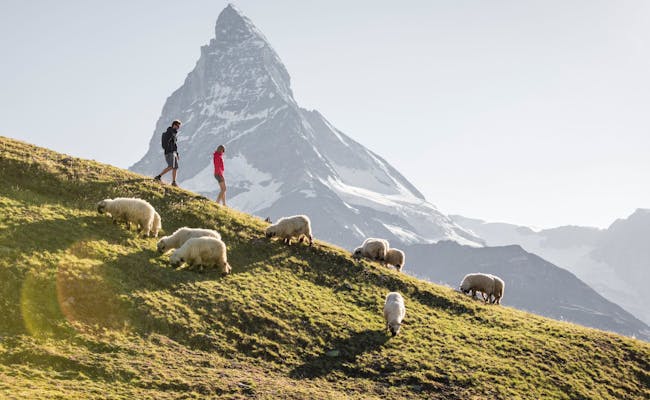
Zermatt is all about the mountains and nature. If you came to Switzerland for the breathtaking views, you're going to love it here.
Numerous hikes and strolls of all difficulty levels will take you to places you didn't even know existed. For example, the popular Zermatt 5-Lakes Path, which takes about 2.5 hours, leads you past five crystal-clear mountain lakes and offers stunning views of the Matterhorn along the way.
Another adventure that might make you a bit dizzy is crossing the longest pedestrian suspension bridge in the world in Randa. It's an impressive 494 meters long and spans across the valley. The circular route to the bridge starts and ends in Randa, just a 15-minute train ride from Zermatt.
If you'd rather skip the hike and see the mountains the easy way, we recommend taking the train up to the Gornergrat. After an incredibly steep train ride, you'll find yourself at an altitude of 3,089 meters above sea level, right in front of the Gorner Glacier and the Matterhorn. Don't be surprised if you find yourself completely out of breath climbing the stairs to the viewing point—it's not you, it's the thin air.
In Zermatt gibt's definitiv mehr als genug zu sehen und zu erleben, also nutz den Tag, um alles nachzuholen, was du gestern nicht geschafft hast.
Wusstest du, dass Zermatt im Winter auch ein beliebtes Skigebiet ist? Wenn du auf der Suche nach Pisten bist, wirst du hier auf jeden Fall fündig.
Sobald du bereit bist, die frische Alpenluft hinter dir zu lassen, nimm den Zug nach Montreux am Genfersee. Verbring den Rest des Tages mit einem gemütlichen Spaziergang entlang der Promenade von Montreux und schau dir die Statue von Freddie Mercury vor der Markthalle an.
Falls du das berühmte Schloss Chillon besichtigen möchtest, kannst du der Promenade bis zum Schloss folgen oder einfach in den Bus steigen. Es gibt auch Passagierschiffe, die regelmäßig zwischen Montreux und Schloss Chillon verkehren.
Alternativ kannst du auch in die Lavaux-Weinberge fahren. Nur eine kurze Zugfahrt westlich von Montreux liegen die bekannten Lavaux-Weinberge, die zum UNESCO-Welterbe gehören. Um die traumhafte Aussicht zu genießen, steig in Cully oder Epesses aus und folge dem ausgeschilderten Wanderweg durch die Weinreben.
Wir wissen, dass das ein recht volles Programm für heute ist. Wir raten dir, nicht alles auf einmal zu erledigen. Aber jetzt, wo du deine Optionen kennst, kannst du flexibel deinen Tag nach deinen Wünschen planen.
Und vielleicht auch dem Wetter entsprechend…

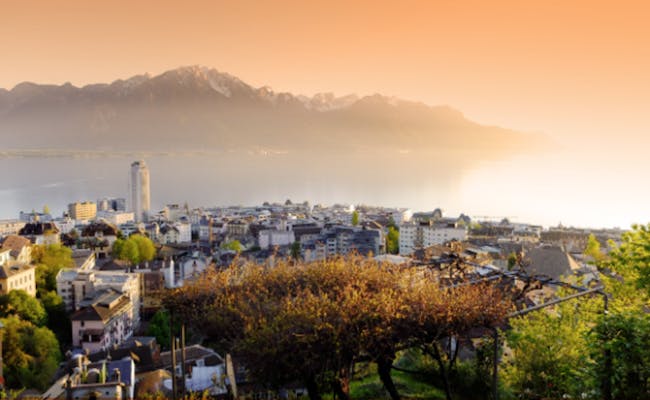
Today, you can look forward to some stunning landscapes. Spend a few hours in and around Montreux in the morning before you head out. On the panoramic train, you'll leave the Lake Geneva region and start your ascent into the Alps on the Golden Pass Line. After a few tunnels, you'll arrive in the Bernese Oberland, our favorite part of the entire train journey.
This area is a true paradise for mountain lovers and sums up just about everything that makes Switzerland special. You’ll find lakes, mountains, lush meadows with grazing cows, glaciers, lots of hiking trails, beautiful landscapes, and charming little villages in abundance here.
Even if you don't have enough time to hop off along the way, the ride through this picturesque region is something you likely won't forget anytime soon. After leaving the Bernese Oberland and descending the hills, you'll arrive in Zweisimmen, where you’ll need to switch to another train.
The final leg of the journey takes you past Spiez and Lake Thun before you finally reach Interlaken. Spend the rest of the day exploring this popular town and get ready for tomorrow. You'll be spending the whole day in this adrenaline-fueled and breathtakingly beautiful place.
You have more activities to choose from today than you can imagine. It all depends on your budget, but in an adrenaline-fueled place like Interlaken, the sky's the limit.
If you can handle it!
Skydiving, paragliding, canyoning, and jet boating are popular activities that will get your adrenaline pumping.
A more relaxing option is to take a cruise on Lake Thun or Lake Brienz. On both lakes, you'll be treated to breathtaking views, and you might just wish you never had to leave. If you want to make a stop during one of the boat trips, you can get off either at Giessbach (Lake Brienz), at the St. Beatus Caves, or in Spiez (Lake Thun).
The Jungfrau region around Interlaken is also a fantastic place for hikers. The number of hiking trails is virtually endless. Regardless of your fitness level or ambitions, you'll find something that suits your taste here.
Of course, the famous Jungfraujoch—also known as the Top of Europe—is the number one destination that everyone wants to see. With the Jungfrau Railway, you’ll head up to the highest railway station in Europe and find yourself surrounded by stunning mountain and glacier scenery.
If you're looking for a more budget-friendly alternative to Jungfraujoch, we recommend visiting Schilthorn, Schynige Platte, Grindelwald First, or Männlichen instead. The rides to these mountains and the views from the summit won't disappoint.
Other attractions in and around Interlaken include: the Ballenberg Open-Air Museum, the chocolate workshop at Funky Chocolate Club, the two mountain lakes Blausee or Oeschinensee, and the Aare Gorge. And let’s not forget the charming towns and villages like Brienz, Spiez, Thun, Lauterbrunnen, or Grindelwald.
We could go on forever here. But you’d probably just get frustrated that you can’t spend the whole week here.
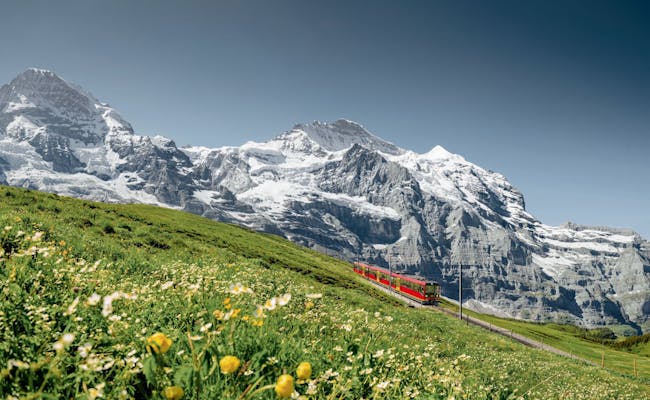
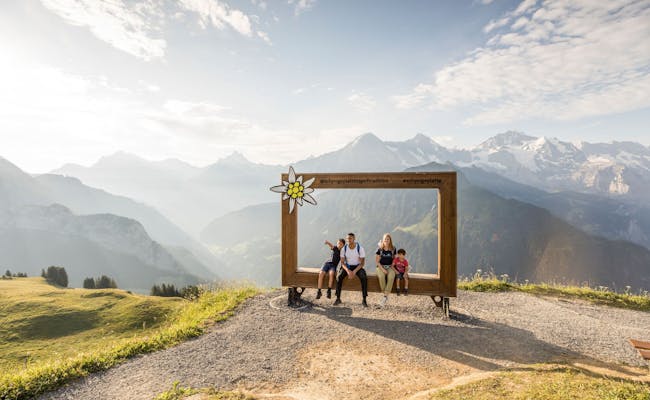
We assume you didn't have enough time yesterday to cross off all your must-dos in Interlaken. So, spend the morning in Interlaken and head to Bern when you're ready. We recommend leaving no later than noon so you can enjoy a few hours in our capital.
Join a city tour or explore Bern at your own pace. Stroll through the old town, visit the Bear Park, check out the Federal Palace, and take a walk back to the Rose Garden to enjoy the view.
You can also visit the Gurten, Bern's local mountain, watch the animals at Dählhölzli Zoo, or check out the Botanical Garden. Take the lift from the train station and enjoy the view from the Great Schanze or go for a swim in the Aare or at Weyermannshaus. For an impressive panoramic view of Bern, we recommend walking up to the Rose Garden.
At the end of the day, you'll take the train to Solothurn. This city is also known as "the prettiest Baroque city in Switzerland."
Take a stroll through this charming old town and get ready to spend the whole day here tomorrow. Definitely treat yourself to a few scoops of ice cream at the Vitaminstation, one of the best ice cream parlors ever. To feel like a local, you can sit on the stone wall by the Aare, the "Aaremüürli," while enjoying your ice cream.
Seraina's Tip: My two absolute favorite places in Solothurn are Pittaria and Vitaminstation. Anyone who loves a good falafel or hummus will adore Pittaria. And the Vitaminstation serves by far the best ice cream I've ever had in Switzerland, at unbelievably fair prices for Swiss standards.
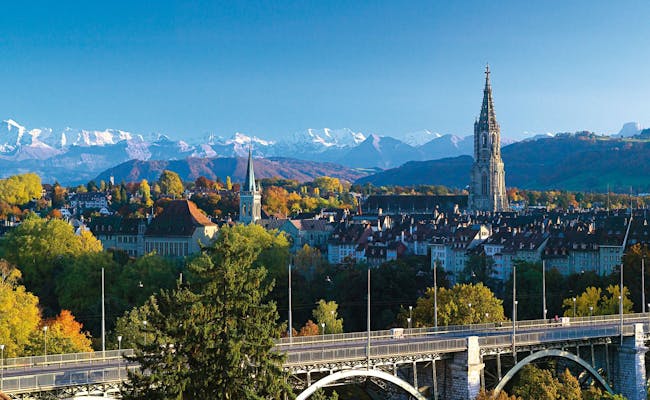
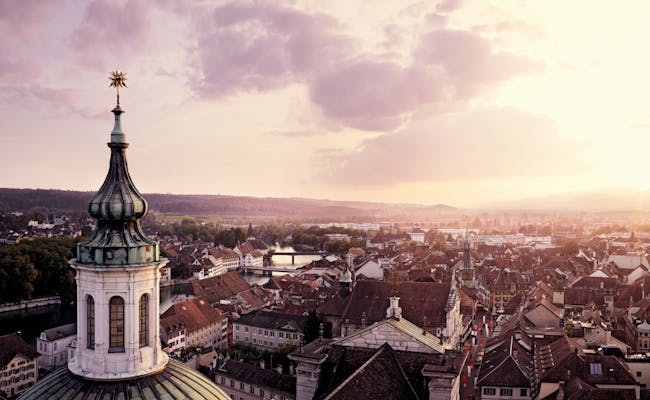
Even though Solothurn isn’t a large city, there’s still plenty to see and do in the surrounding area. One activity we highly recommend is a hike in the Jura. This plateau is a wonderful excursion destination all year round.
A great way to get to the Jura with its countless hiking paths is to take the cable car from Oberdorf up to Weissenstein. From there, you can hike as long and as far as you like. You can either walk back down or take the cable car again.
A very popular trip is the round hike from Solothurn over Balmberg and Weissenstein. Take the post bus from Solothurn to Balmberg, hike along the ridge to Weissenstein, and return by cable car down to Oberdorf. From Oberdorf, the train takes you back to Solothurn.
This is an easy hike that leads you into the Jura without too much effort. During your hike, you can also enjoy views of the Alps, including the famous trio of Eiger, Mönch, and Jungfrau.
Another place you can visit is the Verenaschlucht. For this, stroll along the Verenabach through the forest in the gorge until you reach the small hermitage at the end. The walk takes about 45 minutes round trip.
Alternatively, you can take a boat along the Aare towards Biel. How long you stay on the boat completely depends on your plans. The entire journey to Biel takes about 3 hours. However, you can also get off somewhere along the way and take the train back to Solothurn.
One of the highlights of this trip is the largest stork station in Switzerland located in Altreu. You can reach it after about 45 minutes on the boat. In 1950, when storks were nearly extinct in Switzerland, Max Bloesch started his reintroduction project to save our storks. Thanks to him, you can see around 40 breeding pairs soaring through the air, strolling through the fields, and clattering on the roofs around Altreu.
However, this is only during spring and summer. In autumn, they migrate to warmer areas in the south until winter is over.
If you continue towards Biel, the views of the Jura heights and the Swiss Midlands will accompany you the entire time. After passing a lock, you reach the port of Biel, which is just a short walk from the train station.
From there, it’s a quick 15-minute train ride back to Solothurn.
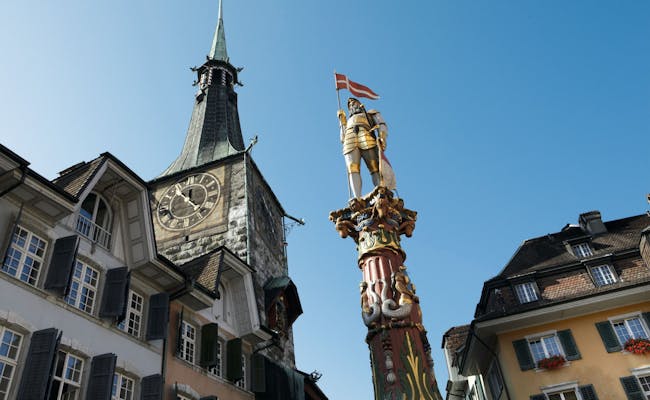
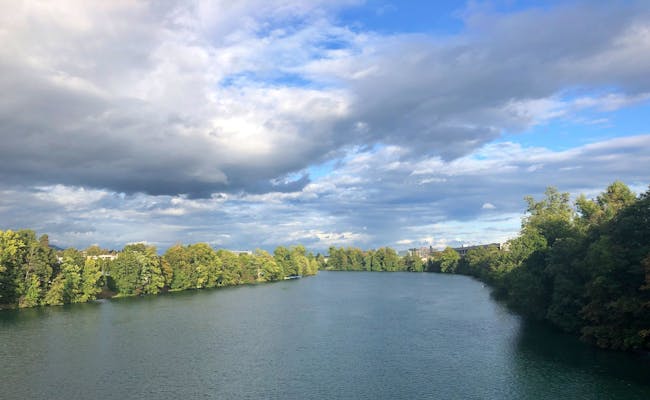
If you need a bit more time in Solothurn this morning, feel free to stick around. Once you're ready, hop on the train to Basel. The journey takes just an hour.
Basel is a vibrant city right on the German-French border. You'll find several city tours at various times. You can either join a tour or explore the city on your own.
Stop by the Pfalz, the perfect viewpoint for some postcard-worthy photos, stroll along the Rhine, and watch the large cargo ships coming in and out of the harbor. Walk past the Cathedral or visit one of the many museums.
In the warmer summer months, you can join the locals for a swim in the Rhine. Before they jump in and drift downstream, they pack their clothes into a Wickelfisch. This dry bag shaped like a fish is a Basel icon.
If there’s something you didn’t get to see in Basel yesterday, today’s your chance. But if you feel you’ve seen enough of the city, you can always hop across the border to visit Weil am Rhein in Germany or St. Louis in France.
In theory, you could even visit all three countries in a single day: Switzerland, Germany, and France. That’s definitely possible in Basel and something you might not get to experience every day, especially if you’re from a country where you have to fly to reach the next border within a reasonable time.
When you’re ready to leave Basel, head back to Zurich and spend the rest of the day exploring the biggest city in Switzerland. If time allows, you can wrap up this itinerary with a visit to the Lindt chocolate factory.
Just outside Zurich, in Kilchberg, you’ll find the brand-new Lindt Visitor Center, which opened its doors to the public in September 2020. If you’ve never tasted a roasted cocoa bean, eaten as many Lindor truffles as you can, or spent a bit of time with the tallest chocolate fountain in the world, now’s your chance.

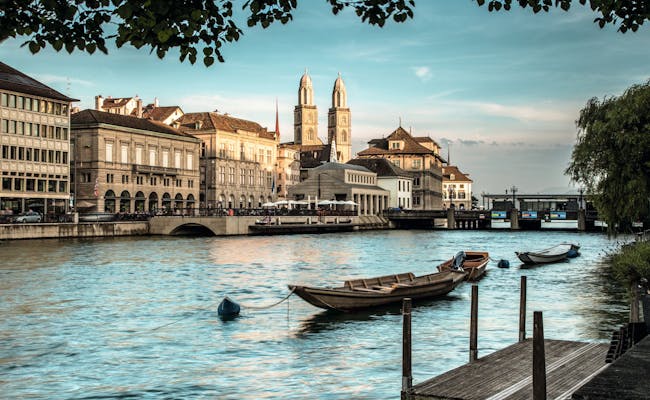
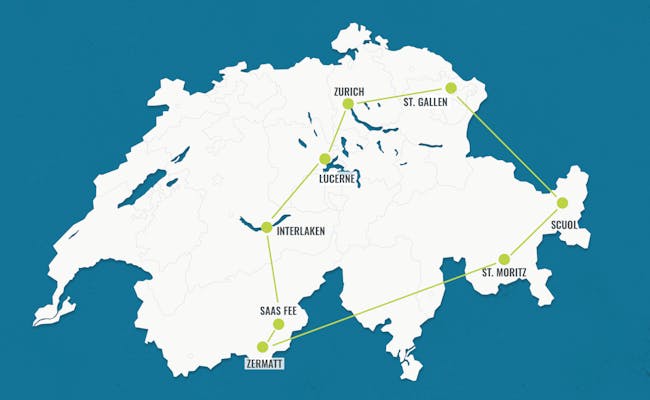
Highlights on this route:
Explore Zurich in the morning on your own, rent a free bike with “Züri rollt” or join a city tour. After the tour, grab a takeout lunch and take the train to St. Gallen.
Spend the afternoon exploring the old town of St. Gallen. With its UNESCO-protected Abbey District, impressive cathedral, and remarkable Abbey Library, this city has a lot to offer.
Don't miss out on the recreational area “Drei Weieren.” You can reach it either by the Mühleggbahn or on foot via one of the many staircases. Alternatively, you can visit the Peter & Paul Wildlife Park or quench your cultural thirst at one of the many museums.
The absolute best place to relax is at the “Drei Weieren.” Here, you can go for a swim or take a walk through the woods. Plus, you’ll get a fantastic view over the whole city, Lake Constance, and even into Germany.
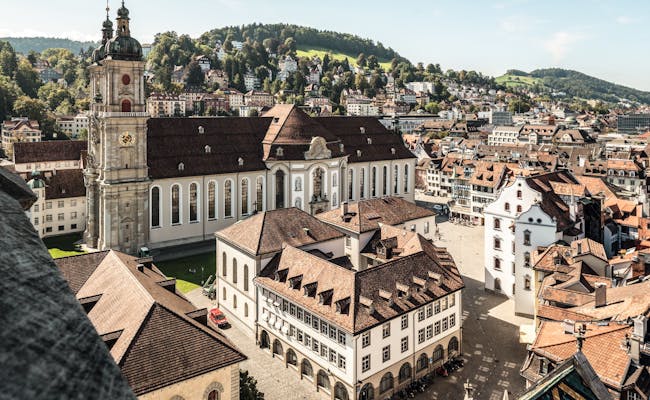
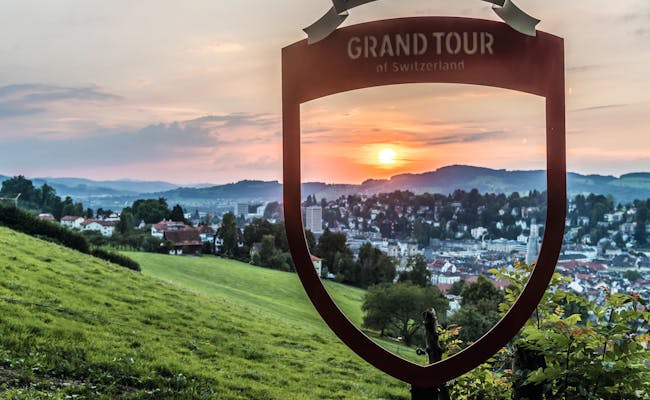
The following two days are fully dedicated to exploring the Alpstein mountain range. Leave whatever luggage you won’t need in St. Gallen and get ready for some serious hiking.
The hiking options are absolutely endless in this mountain range. Whether you’d like to catch a glimpse of the famous Äscher restaurant or go for a swim in the charming Seealpsee, you’ll find your match.
Since you’ve got two days to spare, we’ll run you through one of our favourite hikes in this area. It starts in Brülisau, includes two mountain lakes, some fresh milk and cheese, maybe a night in a stable above the cows and definitely a pair of sore calves.
Firstly, make your way to Brülisau in the Canton of Appenzell Innerrhoden. From here, start your walk to the restaurant Ruhesitz, which you’ll reach halfway up a mountain called Hoher Kasten. From Ruhesitz, follow the signs pointing you toward Lake Sämtisersee. By now, you might be ready for a break. Spend as much time as you like hanging out by or inside this beauty.
From Sämtisersee, keep going until you reach Bollenwees by Lake Fälensee. If you’re looking for comfort, this mountain inn is where you can spend the night. They offer private rooms or dorms with showers as well as a restaurant. The views over the lake are unparalleled and after this long day of hiking, you’ll probably be more than happy to just stretch your legs and take in the stunning backdrop.
However, if you’re up for a bit of an adventure, keep going. Follow Lake Fälensee to the end and you’ll bump into Fälenalp, a little Alp where a farmer’s family takes their cows, goats and pigs to spend the summer. They offer beds in a big dorm in a stable above the cows and cook a rustic farmers’ dinner for you.
Everyone looking for a place to forget about this busy world out there will love coming here. In case you decide to stay at Bollenwees, we still recommend you walk to Fälenalp to see this magical place and to try their fresh goat cheese. Either today after settling in at Bollenwees or tomorrow before heading back to St. Gallen.
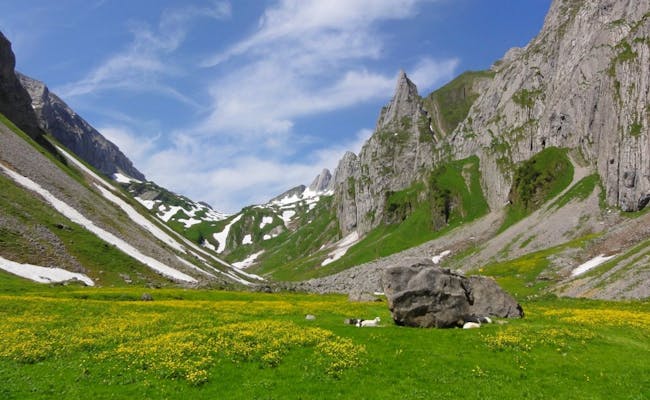
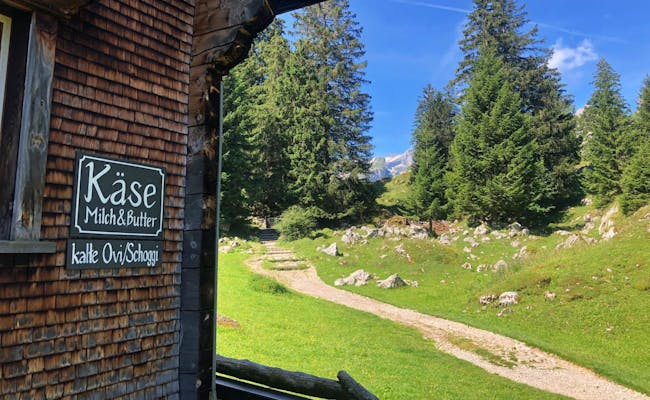
Wherever you spent last night, we hope you slept well in this fresh mountain air. How you plan out your day today is totally up to you. You haven’t exhausted your hiking options by far, so keep going for as long as you please.
One option is to climb to Bogartenmannli and terminate your hike in Wasserauen after passing Seealpsee. This should put you on the train to St. Gallen some time in the afternoon. Or you can just walk back to Brülisau via Sämtisersee and Brüeltobel. The world is your oyster here.
On your way back to St. Gallen, you might like a quick stopover in Appenzell, the charming capital of the Canton of Appenzell Innerrhoden. In case you’re feeling brave, visit the little cheese store at Hauptgasse 13. But be warned, those smelly cheese fumes will knock your socks off the second you enter the store.
There’s no way your feet will be able to compete with that odour. Not even after two full days of being trapped inside your trekking boots... 🙂
Oh, and don’t miss out on a piece of Appenzeller Biber, an iconic local sweet treat made of gingerbread and a honey almond filling. And before you ask: Nope. This Biber doesn’t have any famous Canadian relatives...
Also, if you’re a beer-lover, make sure to stop by the Locher brewery. They brew the popular Quöllfrisch beer that is consumed all across Switzerland. In the evening, head back to St. Gallen and enjoy sleeping like a baby tonight. Spending a day or two in the mountains has a tendency to leave you peacefully exhausted.
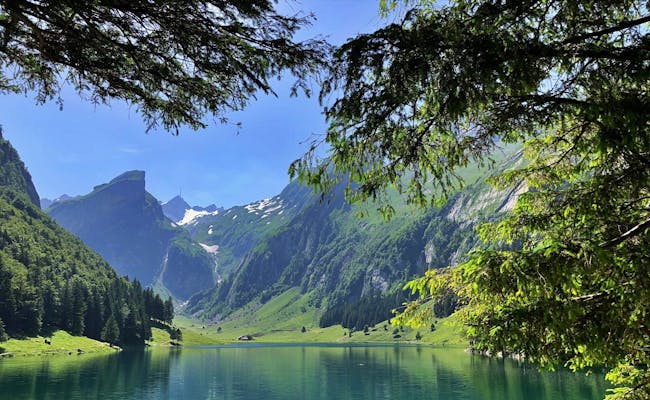
What time you continue your journey today is entirely up to you. The train ride to Scuol takes just under three hours and even if you stick around in St. Gallen until the afternoon, you can still make it to Scuol in time.
So catch the train whenever you’re ready and travel to the marvellous Engadine region in the Canton of Grisons. The Engadine has to be one of the most magical places in Switzerland. Especially during autumn, when the leaves turn yellow, orange and red. But throughout the rest of the year, it’s just as fantastic a place to visit.
Enjoy the rest of your day exploring Scuol and get ready for a few days of being surrounded by mountains, forests, rivers, lakes and plenty of Swiss wildlife.
Ever seen a marmot? Chances of seeing one in the near future are pretty good.
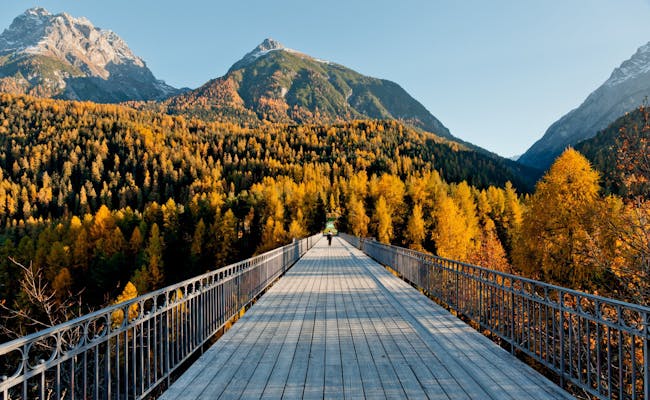
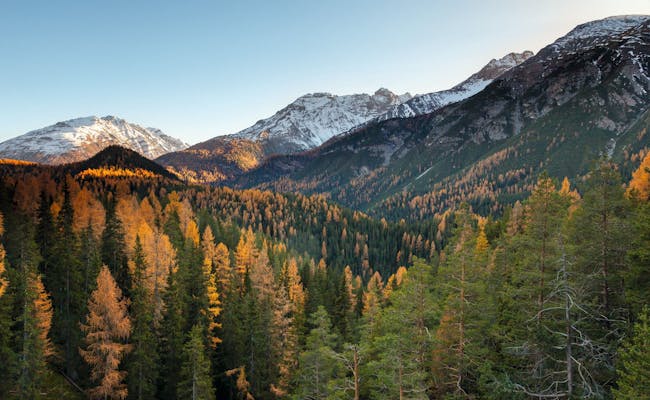
These next two days, you’re going to explore Switzerland’s only national park in all its glory. Leave your luggage in Scuol and only take what you need for your hiking excursion. If you ask nicely, they might let you leave your luggage at your accommodation in Scuol until you come back from the mountains tomorrow night.
The rules that apply when visiting Switzerland’s only National Park are pretty strict. There’s no leaving the marked trails, no taking plants with you, no making fires and so on. Once you arrive at the gates of the park, please read the signs or stop by the visitor centre in Zernez to make sure you’re prepared.
What you probably weren’t expecting is that visiting the park is free. Everything in Switzerland seems to be more expensive than anywhere else in the world. And yet, while you pay an entrance fee to pretty much every National Park in the world, ours is free. Pretty cool, right?
Since the only place to spend the night inside the Swiss National Park is a mountain hut called Chamanna Cluozza, you’ve got one task to accomplish today. Get to Chamanna Cluozza.
One hike we recommend starts half an hour from Scuol, in the village of Zernez. From there, you’ll spend a good three hours until you reach your camp for the night. The hike isn’t too straining. And if you’re not the most experienced hiker, just give yourself enough time and you should be alright.
Enjoy this evening far away from civilisation without phone reception and sitting around a table chatting to strangers. You’ve earned it.
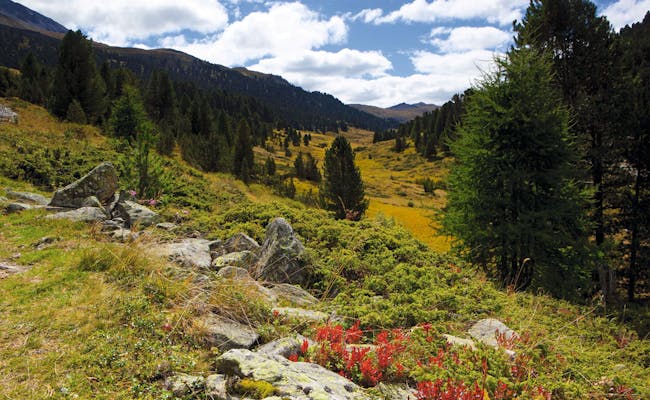

If you haven't planned today's hike yet, be sure to ask the owners of Chamanna Cluozza for their recommendations. There are plenty of other hikes available with varying levels of difficulty. This gives you another day to explore the national park.
Or, after breakfast, you can head straight back to Scuol if you've had your fill of hiking. The choice is completely up to you. If you're looking for a relaxing alternative, the Engadin is just the place.
For instance, there's the thermal bath in Scuol. Depending on how sore your feet are from yesterday's hiking, a few hours of relaxation in the hot springs might be just what you need.
Alternatively, we recommend visiting one of the nearby villages, like Guarda or Sent. The stone houses you'll see there are typical for this part of Switzerland.
And while you're passing those impressive buildings, keep an eye out for a bakery. The famous Engadine nut cake comes from the Engadin. If you have a sweet tooth, you absolutely have to try a piece or two. This cake is quite rich and substantial, but every single calorie is worth it.
After breakfast, you leave Scuol and head to St. Moritz. You have the whole day to explore this stylish resort. It's all about outdoor experiences here, in summer and winter. Whether it's cycling, hiking, stand-up paddling, swimming, windsurfing, skiing, snowboarding, snowshoeing, cross-country skiing, or just taking a walk, you'll find everything your heart desires.
Just a short drive from St. Moritz is Lake Silvaplana. This is a breathtaking place to enjoy some of these activities.
Another spot worth a visit is Ospizio Bernina. At 2,253 m above sea level, this little station is the highest point of the Bernina Express scenic train. Trains depart hourly from St. Moritz, taking you past lakes, glaciers, and towering mountain peaks.
As for the culinary side, we recommend trying a plate of Bündner barley soup. This soup with barley, vegetables, and meat is a typical Graubünden dish. It warms you up like nothing else on a chilly day.
Back in St. Moritz, you can spend the rest of the day wandering through the town or relaxing by the lake. St. Moritz isn't quite as charming and mystical as other villages in the area, like Samedan or La Punt, but it's great for a bit of window shopping. And if you're lucky, you might even spot a celebrity or two.


Today, you’ll be traveling on the Glacier Express from St. Moritz to Zermatt. This journey on the "slowest express train in the world" is a unique experience. Throughout the trip, you’ll be treated to the best views the Alps have to offer.
The train departs St. Moritz twice daily in the morning. The schedule changes throughout the year, and some trains do not cover the entire route between St. Moritz and Zermatt. To find your connection, check the updated timetable in advance.
There’s a reason the Glacier Express is one of the most popular train routes in Switzerland. What makes this ride so unforgettable are the fantastic views accompanying you the whole way. The train takes you over 291 bridges, through 91 tunnels, across two three cantons, and through two language regions.
The journey takes a little over 8 hours, and depending on when you leave St. Moritz, you’ll arrive in Zermatt between 5:00 PM and 6:00 PM. Once you arrive, you can spend the rest of the day wandering through the charming mountain town and enjoying the sight of the mighty Matterhorn.
Assuming it’s not shrouded in clouds.
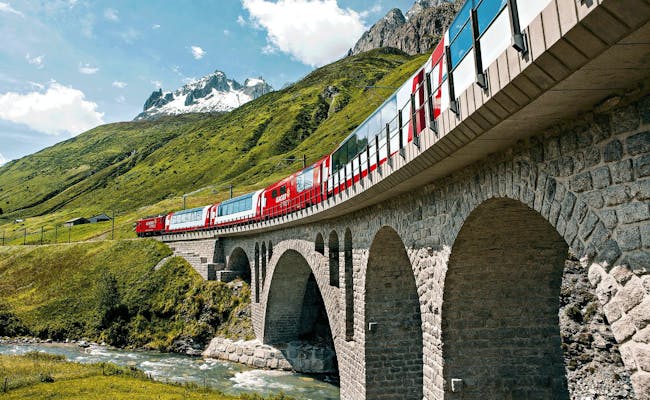
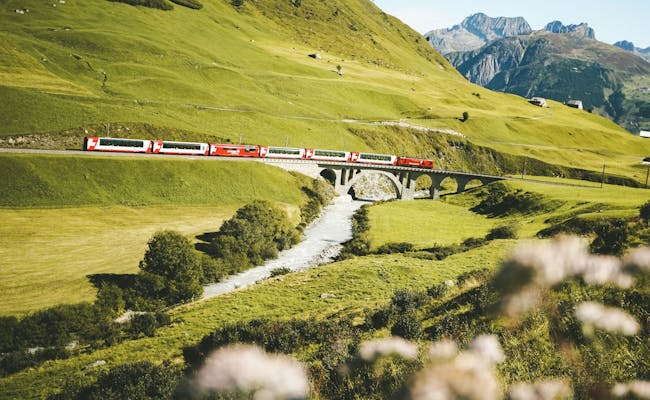
In Zermatt, the mountains and nature take center stage. If you came to Switzerland for the spectacular views of the mountains, you’re gonna love it here.
There are numerous hikes and walks of all difficulty levels that will take you to places you didn’t even know existed. One popular option is the Zermatt 5-Lakes Walk, which takes about 2.5 hours. It leads you past five crystal-clear mountain lakes and offers breathtaking views of the Matterhorn at every turn.
Another adventure that might make you a bit dizzy is crossing the world's longest pedestrian suspension bridge in Randa. It’s a whopping 494 m long and stretches across the valley. The round trip to the bridge starts and ends in Randa, just a 15-minute train ride from Zermatt.
If you'd rather skip the hike and see the mountains the easy way, we recommend taking the train up to Gornergrat. After an incredibly steep ride, you’ll find yourself at an altitude of 3,089 m above sea level, right in front of the Gorner Glacier and the Matterhorn.

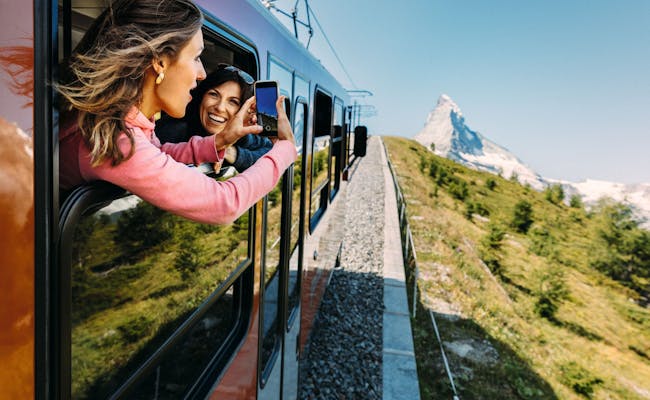
It's up to you how much time you spend in Zermatt this morning. When you're ready, continue your journey to Saas-Fee.
If you're visiting in the summer, your hiking options are nearly endless. Over 350 kilometers of trails will lead you to places you didn’t even know existed. And while you're at it, don't forget to keep an eye out for marmots during your hike. Your chances of spotting a few of these adorable alpine residents are pretty good up here.
The Swiss Glacier World, the highest playground in the world, might be a place you want to check out. Who wouldn't want to zipline over a glacier?
But Saas-Fee isn't just interesting during the hiking season. If you're here in winter, you can really let loose skiing or snowboarding. And since Saas-Fee is so high up, you're skiing in part on a glacier. You don't get to experience that every day.
With over 150 kilometers of groomed slopes, you'll be kept busy for as long as you like. While other ski resorts have struggled with a lack of snow in recent years, Saas-Fee usually has plenty of snow thanks to its altitude.
Enjoy the views of the mountains, the snow, the hikes, the marmots, and the fresh air.

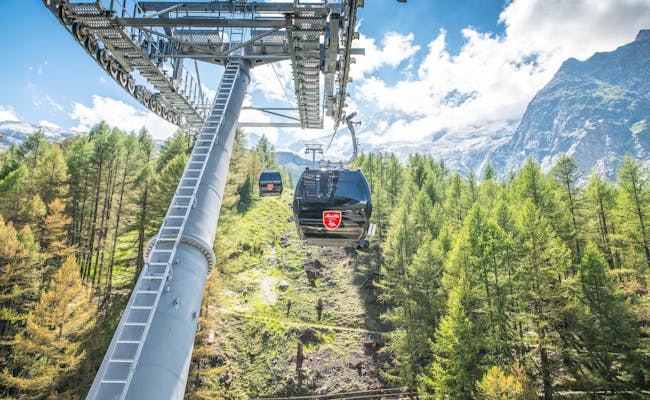
How you spend today is totally up to you. One option is to stay a bit longer in Saas-Fee, continue hiking, look for marmots, go skiing, strap on snowshoes, take photos of the glacier, or whatever else you have in mind.
If you've had enough of the thin air, head over to Interlaken. Spend the rest of the day exploring this popular town and get ready for tomorrow. You're going to spend the whole day in this adrenaline-packed and scenic spot.
Since there are so many options in this area, check out tomorrow's suggestions to see if you can tick something off your list this afternoon. Maybe you're up for a quick trip to Lauterbrunnen or a ride up to Harder Kulm for some amazing views?
You’ve got more activities to choose from over the next two days than you can imagine. It all depends on your budget, but in an adrenaline-filled place like Interlaken, the sky's the limit.
If at all!
Skydiving, paragliding, canyoning, and jet boating are popular activities that will get your adrenaline pumping.
A slightly more relaxing option is a ride on a passenger boat on Lake Thun or Lake Brienz. You'll be treated to stunning views on both lakes, and you'll wish you never had to leave. If you want to make a stop during the boat rides, you can get off at Giessbach (Lake Brienz), at the St. Beatus Caves, or in Spiez (Lake Thun).
The Jungfrau region around Interlaken is also a fantastic spot for hikers. The number of hiking trails is nearly endless. No matter your fitness level or ambitions, you'll find something that suits your taste here.
Of course, the famous Jungfraujoch - also known as the Top of Europe - is the number one destination everyone wants to see. With the Jungfrau Railway, you’ll ride up to the highest railway station in Europe and find yourself amidst impressive mountains and glaciers.
If you're looking for a more budget-friendly alternative to Jungfraujoch, we recommend visiting the Schilthorn, Schynige Platte, Grindelwald First, or Männlichen instead. The rides to these mountains and the view from the summit won't disappoint you.
Other attractions in and around Interlaken include: the Ballenberg Open-Air Museum, the chocolate factory at the Funky Chocolate Club, the two mountain lakes Blausee or Oeschinensee, and the Aare Gorge. And let's not forget the charming towns and villages of Brienz, Spiez, Thun, Lauterbrunnen, or Grindelwald.
We could go on forever here. But we think you’d just be upset that you can't spend the whole week here.

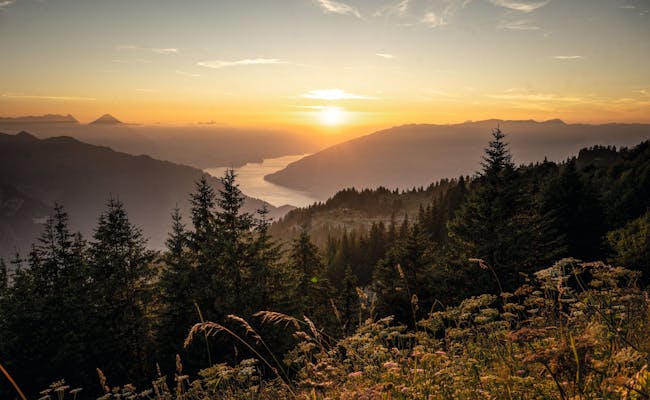
We’re assuming you didn’t get to do everything you set your mind to yesterday. This is why you have another day to knock yourself out in and around Interlaken today.
Do what you need to do before heading back to Zurich in the late afternoon or evening. The train ride from Interlaken to Zurich takes just under two hours and unless you have a plane to catch, there’s no rush to get back.

Highlights on this route:
Explore Zurich in the morning at your own pace, rent a free bike with "Züri rollt" or join a city tour. After the tour, grab some takeout for lunch to enjoy on the train to Bern.
In this charming city, recognized by UNESCO, there's plenty to do. Join a city tour or explore the Swiss capital at your own pace. Stroll through the old town, visit the Bear Park, or check out the Federal Palace.
You can also visit the Gurten, Bern's local mountain, observe animals at the Dählhölzli Zoo, or explore the Botanical Garden. Take the lift from the train station to enjoy the view at the Grosser Schanze, or go swimming in the Aare or at Weyermannshaus. In the evening, we recommend heading into the Rosengarten for a fantastic view over Bern at night.
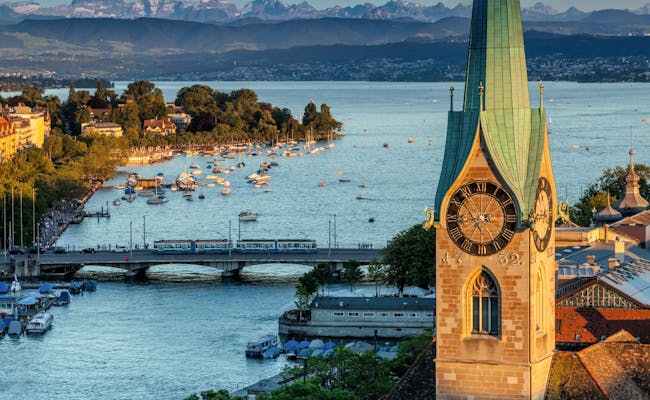
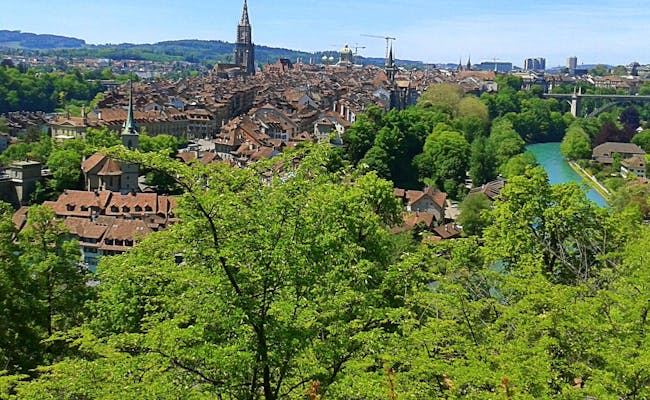
After breakfast, take the train to the charming little town of Murten. The journey only takes half an hour, and you don't even have to change trains. Murten itself is tiny, and you won't need long to explore the town. Stroll through the historic town center and stretch your legs by the lake.
The area around Murten is perfect for cycling, hiking, swimming, or just enjoying the lake.
By the way, you'll find the longest freshwater sandy beach in Europe at Lake Murten in Salavaux. This might not impress someone who grew up by the sea, but for a landlocked country like Switzerland, it's quite remarkable.
Once you've had enough of Murten, head back to Bern for the rest of the day and another night in the Swiss capital.

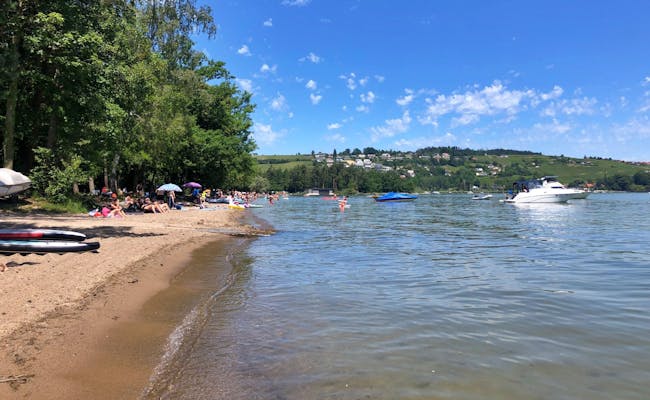
It’s important to keep your breakfast light today. As soon as you finish your last bite, it’s time to catch the train to Trubschachen. That’s where the legendary Kambly cookies come from.
You don’t need a ticket to visit the Kambly factory store right next to the Trubschachen train station. Admission is free. You can spend as much time as you want here and taste up to 100 varieties of delicious biscuits. Fancy a second breakfast?
Unfortunately, you can’t tour the factory or watch the production of this traditional Swiss treat. However, there’s a cinema in the store where you can learn more about the Kambly family business.
If you’re either close to bursting or just can’t eat any more sweets, you can continue on to Bern. To help digest your Kambly overload, stroll through the old town, relax by the lake, or visit the Glacier Garden with its famous lion monument.


Lucerne has an incredible amount to offer. One of the most exciting excursions is the ride on the world's steepest cogwheel train to Mount Pilatus, Lucerne's local mountain. This train only operates in summer from Alpnachstad, while the cable car from Kriens runs all year round to Mount Pilatus.
Speaking of mountains: Mount Titlis is another landmark in the region worth visiting. From Engelberg, you can reach the summit via two gondolas. One of them is the world's first revolving cable car. So, you can look forward to an impressive 360-degree view.
For an easy hike that includes a ride on a 152.8 m high rocket-like elevator, you can take a boat or bus to Kehrsiten-Bürgenstock.
Don't forget about Stanserhorn, a mountain near Lucerne, accessible by a modern double-decker cable car. It's best to take the boat to Stansstad. There, you switch to the cogwheel train for the first stage and ride the last part in the open gondola to Stanserhorn.
On this free day, you could theoretically also head to Interlaken. Leave Lucerne in the morning with the Golden Pass Line, spend the day exploring the picturesque area around Interlaken, and return to Lucerne in the evening.
Another great way to spend the day around Lucerne is by taking a ride on Lake Lucerne. Several steam and passenger ships operate on the lake, taking you on a scenic excursion.
As you can see, Lucerne has a lot to offer on a sunny day. However, the weather doesn't always cooperate. In that case, we have some cool indoor options for you.
One option is Aeschbach's Chocoworld in Root. The bus ride there takes about 30 minutes. Nothing brightens a rainy day quite like delicious chocolate, right?
In Hergiswil, not far from Lucerne, you'll find what the Swiss affectionate call the "Glasi." The glass factory Hergiswil guides you through the glass-making process, lets you observe the professionals at work, and even offers you the chance to try glassblowing yourself. When was the last time you made your own glass?
Another option for bad weather is the Swiss Museum of Transport in Lucerne. As the name suggests, this museum focuses on various modes of transportation. Everything from bicycles to astronautics is represented here.
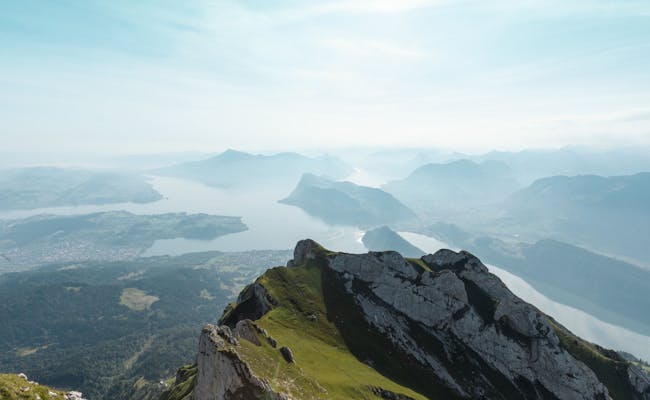
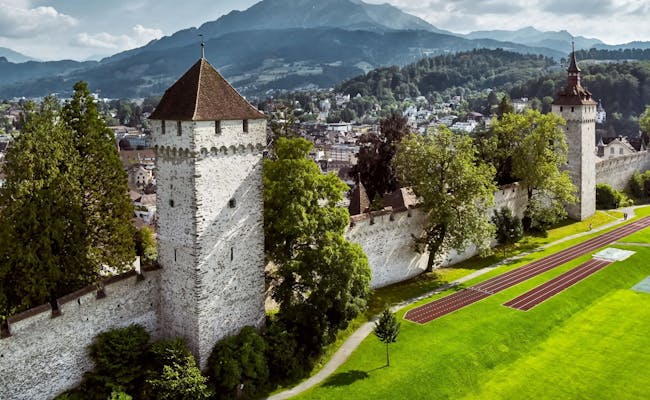
Spend as much time as you like in Lucerne today. Finish up anything you didn’t manage to do in the last two days. Whenever you’re ready, you can continue on the Golden Pass to Interlaken.
The Golden Pass Line is a popular scenic route from Lucerne to Montreux and is operated by several train companies. It connects the heart of Switzerland with the shores of Lake Geneva.
This scenic route passes by eight lakes, travels through six different cantons, crosses three mountain passes, and connects two language regions. The segment today between Lucerne and Interlaken is run by the Zentralbahn and takes just under two hours.
When you arrive in Interlaken, you’ll spend the evening in this lively and very touristy town. There’s no shortage of activities here, and if you want to really enjoy this region, you’ll be glad to spend two nights here. So get ready for an awesome day in Interlaken tomorrow.
You have more activities to choose from today than you can imagine. It all depends on your budget, but in an adrenaline-fueled place like Interlaken, the sky's the limit.
If at all!
Skydiving, paragliding, canyoning, and jet boating are popular activities that will get your adrenaline pumping.
A more relaxed option is a ride on the passenger boat on Lake Thun or Lake Brienz. On both lakes, you'll be treated to incredible views and you'll wish you never had to leave. If you want to stop at one of the boat trips, you can get off at Giessbach (Lake Brienz), the St. Beatus Caves, or in Spiez (Lake Thun).
The Jungfrau region around Interlaken is also a fantastic spot for hikers. The number of hiking trails is virtually endless. No matter your fitness level or ambitions, you’ll find something that suits your taste.
Of course, the famous Jungfraujoch - also known as the Top of Europe - is the number one destination everyone wants to see. With the Jungfrau Railway, you'll ascend to the highest railway station in Europe and find yourself amidst the stunning mountain and glacier world.
If you're looking for a budget-friendly alternative to Jungfraujoch, we recommend visiting the Schilthorn, Schynige Platte, Grindelwald First, or the Männlichen instead. The rides to these mountains and the view from the summit won’t disappoint you.
Other attractions in and around Interlaken include: the Ballenberg Open-Air Museum, the chocolate workshop at the Funky Chocolate Club, the two mountain lakes Blausee or Oeschinensee, or the Aare Gorge. And let's not forget the charming towns and villages like Brienz, Spiez, Thun, Lauterbrunnen, or Grindelwald.
We could go on forever here. But you’d probably just get annoyed that you’re not spending the whole week here.
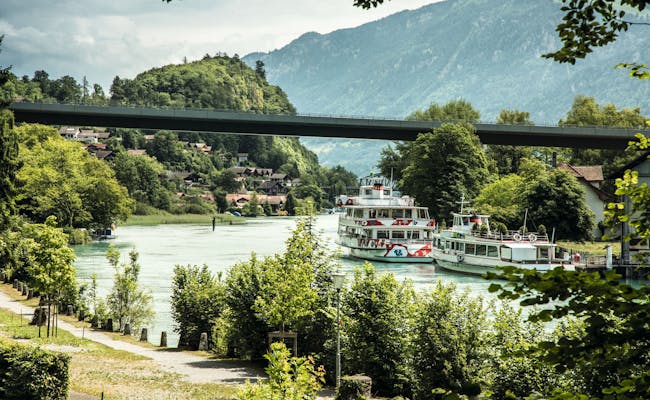
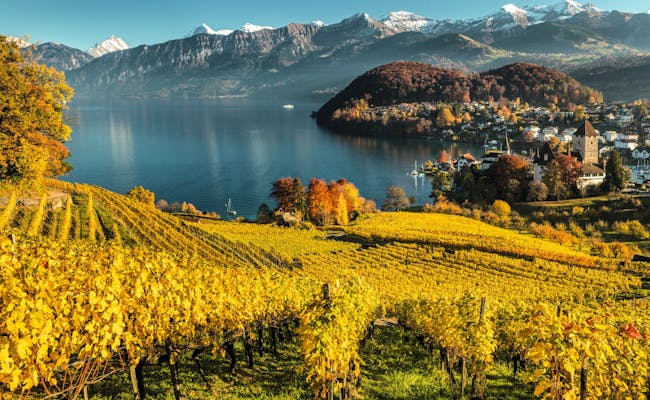
Today, you're in for another scenic treat. As soon as you leave Interlaken heading towards Zweisimmen, you'll have Lake Thun on your right. For the best view of the lake, we suggest snagging a seat on the right side of the train.
After a little over an hour's ride, you’ll need to switch trains in Zweisimmen. This is where the ascent through the Bernese Oberland towards Gstaad begins. This region is a dream come true for mountain lovers and encapsulates everything that makes Switzerland special. You'll find lakes, mountains, lush meadows with grazing cows, glaciers, plenty of hiking trails, stunning landscapes, and charming little villages in abundance here.
Once in Gstaad, you have several options for spending your afternoon. Since this area is a hiker's paradise, you'll be spoiled for choice. One hiking option takes you to Lake Lauenensee, a mountain lake surrounded by moorland.
A great excursion from Gstaad is a visit to the impressive Glacier 3000. After a 35-minute bus ride to the Col du Pillon, you’ll arrive at the cable car valley station. Jump into the gondola and enjoy the ride. Once you reach the top, a breathtaking 360° view of the Alps awaits you.
On a clear day, you can see some of the most famous peaks in the Alps, such as the Matterhorn, Mont Blanc, and the well-known trio of Eiger, Mönch, and Jungfrau. If you’re feeling adventurous, take on the Peak Walk to Scex Rouge. This is the world's first suspension bridge connecting two peaks. At Glacier 3000, there are also other activities like the bobsled run or a hike across the glacier.
If you stroll through Gstaad in the evening, keep your eyes peeled for celebrities. This place often attracts famous personalities, similar to St. Moritz.

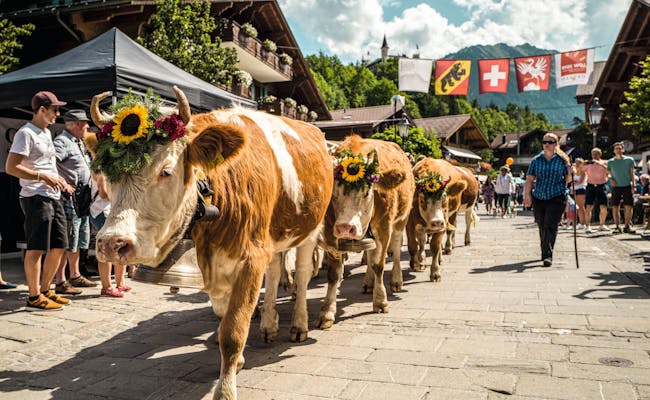
It’s already time to say goodbye to this beautiful region. After breakfast, hop on the Golden Pass train and continue your scenic journey. Once you leave the Bernese Oberland and descend the hills, you’ll arrive in the French-speaking part of Switzerland.
The Golden Pass Line ends in Montreux, where you’ll spend the afternoon. Enjoy a few hours in this stunning area by Lake Geneva before heading to Bern.
Head to the promenade and check out the Freddie Mercury statue in front of the marketplace. If you want to visit the famous Château de Chillon, you can either walk along the promenade to the castle or take the bus. Passenger boats also run regularly between Montreux and Château de Chillon.
Alternatively, you could head in the other direction to the Lavaux vineyards. Just a short train ride west of Montreux, you’ll find the renowned Lavaux vineyards, a UNESCO World Heritage site. To enjoy the stunning views, get off in Cully or Epesses and follow the marked hiking paths through the vines.
Today is all about cheese and chocolate. After all, Switzerland is famous for them. So, hop on the train to Gruyères and get ready for a feast in a medieval town.
The Gruyère cheese factory is just behind the train station. Here, you can watch how the traditional Gruyère cheese is made. Tasting samples are, of course, included. Once you’ve had your fill of snacks, you can either take the bus or follow the path until you reach the center of Gruyères. This walk will take you about 20 minutes.
The main attraction in Gruyères is probably the castle, which is open to the public and costs 12 CHF for entry. But the charming cobblestone streets and countless souvenir shops will likely tempt you to stay longer than you planned.
After exploring Gruyères and maybe picking up a souvenir or two, you can head to Broc to visit La Maison Cailler. In their visitor center, you’ll learn all about Switzerland's oldest chocolate brand. At the end of the tour, there’s a buffet where you can indulge in heaps of chocolate.
On the train ride back to Montreux, you can try to digest your cheese and chocolate overload. Once you arrive in Montreux, grab your luggage and make your way to Lausanne, which is just a short train ride away by Lake Geneva.

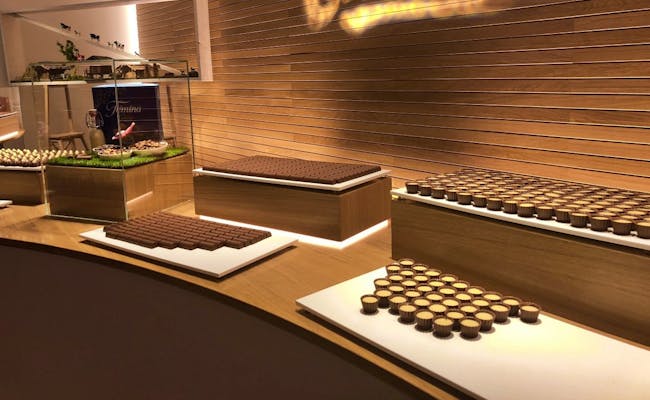
Today you have the whole day to relax in and around Lausanne. The picturesque old town of Lausanne is built on three hills and surrounded by vineyards. It is home to the International Olympic Committee and the only metro in Switzerland.
With its location on Lake Geneva and the Lavaux vineyards, Lausanne is a fantastic place to spend half a day or even a whole day. So if you haven't been to Lavaux yet, you should definitely check it out today.
If you're up for a bit of a drive, you can either visit the medieval town of Nyon or head all the way to Geneva. This medieval town on the shores of Lake Geneva is surrounded by charming vineyards. Follow the path through the vines to Château de Nyon and enjoy the view. Afterwards, make your way to Geneva, the second-largest city in Switzerland.
In Geneva, you can either explore the city on your own, rent a free bike with "Genève Roule", or join a guided city tour. Of course, you also have the option to take a boat ride. You can board in Geneva, Nyon, or Lausanne and relax on the beautiful lake.
Back in Lausanne, enjoy one last night in the French part of Switzerland. If you want to hear something interesting, head to the cathedral between 10:00 PM and 2:00 AM and watch the tower. Since 1405, watchmen have been notifying the current time from up there in the middle of the night.
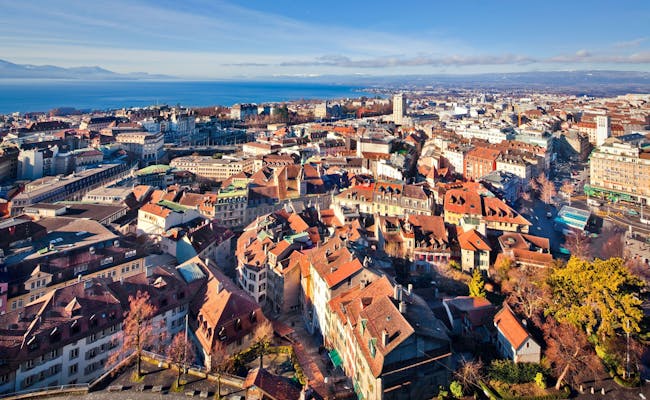

Catch up this morning on what you couldn’t get done around Lake Geneva in the last two days. When you're ready, hop on the train to Solothurn.
On your way, you can take a stop in Neuchâtel. This charming French-speaking city sits by another beautiful lake. Spend a few hours exploring the lovely streets with lake views and steep alleyways. If you want even more stunning vistas, take a trip up to Chaumont, Neuchâtel's local mountain.
The funicular train runs from Le Coudre to the summit. From there, you can hike down to Cressier via Trois Cheminées. A bus will take you back to Neuchâtel from Cressier. Alternatively, you can stroll in Chaumont and ride the funicular back down.
When you're ready to continue, catch the next train to Solothurn. It won’t take you more than half an hour to reach the city, known as Switzerland’s prettiest Baroque town. You probably won’t have much time left to explore the city this evening.
But definitely treat yourself to some ice cream at the Vitaminstation, one of the best ice cream shops around. To fit in like a local, you can sit on the stone wall by the Aare, the “Aaremüürli”, while enjoying your ice cream.
Seraina's Tip: My top two favorite spots in Solothurn are Pittaria and Vitaminstation. Anyone who loves a good falafel or hummus will adore Pittaria. And Vitaminstation makes, by far, the best ice cream we’ve ever had in Switzerland, with incredibly fair prices for Swiss standards.
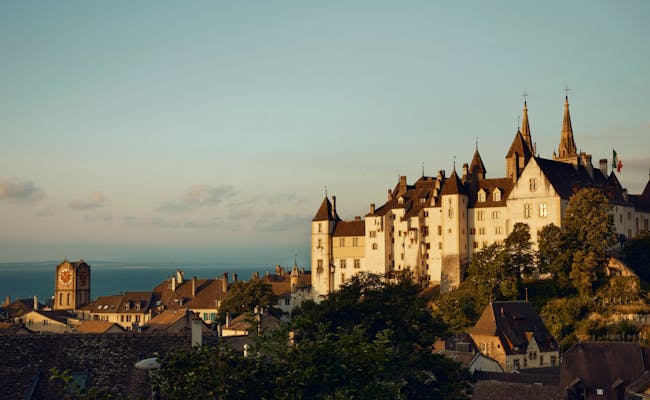
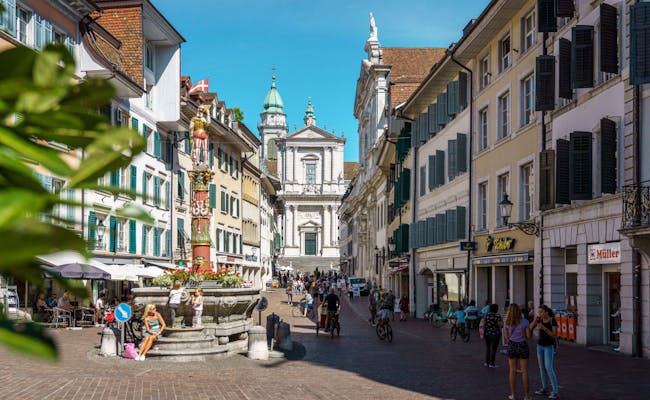
Although Solothurn is by no means a big city, there’s still plenty to see and do in the area. One activity we particularly recommend is going on a hike in the Jura mountains. This high plateau is a wonderful area to visit all year round.
One option to reach the top with its countless walking trails is by cable car from Oberdorf to Weissenstein. Feel free to walk as long and as far as you like before hiking back down or catching the cable car to Oberdorf.
A very popular hike is the round trip from Solothurn via Balmberg and Weissenstein. Catch the Postauto in Solothurn, get off at Balmberg, walk along the crest to Weissenstein and head back down to Oberdorf by cable car. From Oberdorf, the train will take you back to Solothurn.
This is an easy walk and takes you into the Jura without too much effort. During your hike, you’ll also enjoy the view over the Alps, including Eiger, Mönch and Jungfrau.
Another place you can visit is Verena Gorge. You can walk along the creek through the forest in the gorge until you reach the little hermitage at the end. The walk takes roughly 45 minutes return and is super peaceful.
Alternatively, hop on the passenger ship to Biel. How long you stay on it really depends on your preferences. You can go all the way to Biel – which takes around three hours – or get off anywhere along the way and catch the train back to Solothurn.
One of the highlights on this tour will be Switzerland’s largest stork station in Altreu, which you’ll pass about 45 minutes into the journey. In 1950, when storks were nearly extinct in Switzerland, Max Bloesch started his reintroduction project to save our storks. Thanks to him, around 40 breeding pairs can be seen soaring through the air, strutting across the fields and clattering on the rooftops around Altreu these days.
Only in spring and summer, though. They travel to warmer territories in autumn until winter is over.
If you continue your journey onward to Biel, the views of the Jura mountains and the Swiss Central Plateau will accompany you all the way. After passing through a watergate, you’ll arrive at the port in Biel, which is only a short walk from the train station.
From there, heading back to Solothurn will take 15 minutes by train.
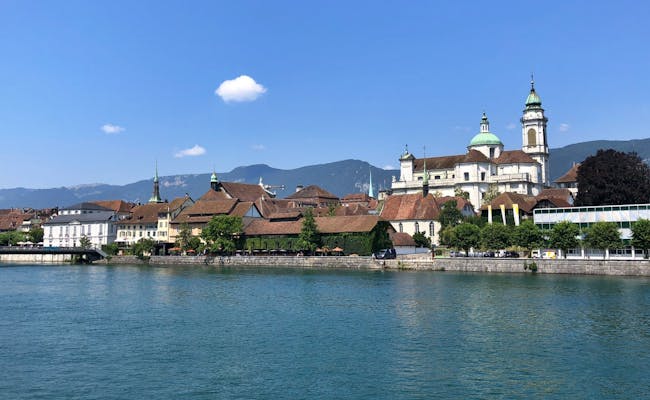
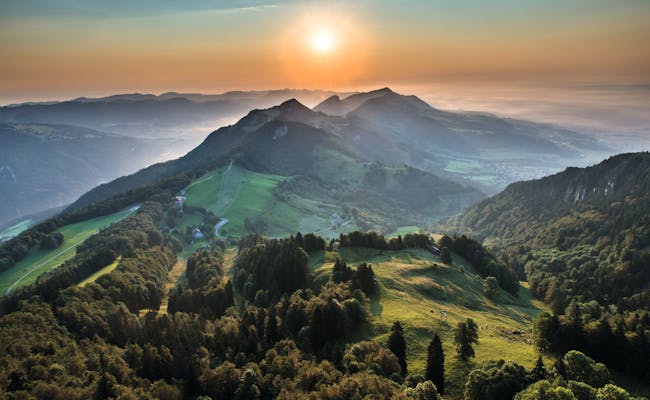
If you want, you can spend the morning exploring more of Solothurn. But if you've seen enough of the city, take the train to Schaffhausen. Drop off your luggage at your accommodation and head straight to Neuhausen, where the powerful Rhine Falls attract visitors from all over the world.
Access to the falls from the north bank is free, while visiting from Schloss Laufen on the south side costs 5 CHF. Take your time to fully immerse yourself in the magic of the Rhine Falls. When you’re ready, continue on to Schaffhausen.
Schaffhausen has a charming old town. Here, you'll find a total of 171 bay windows, more than any other city in Switzerland. Once you've checked them all off and explored the rest of Schaffhausen, you can head up to Munot and enjoy the view over the city.
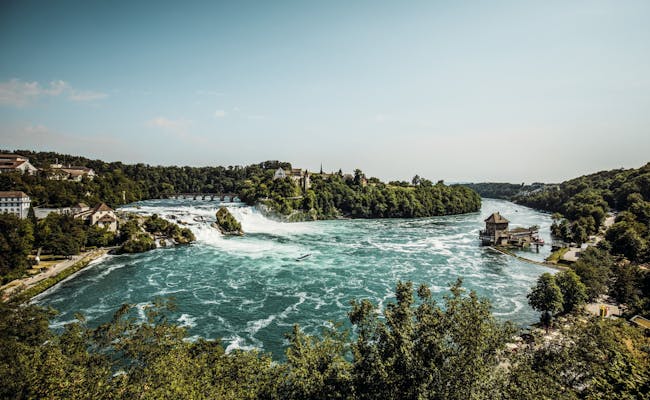
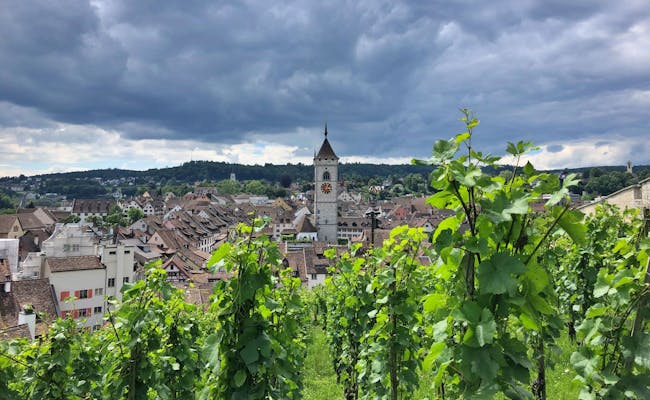
After breakfast and maybe spending some more time strolling through Schaffhausen, hop on the train and visit the picture-perfect old town of Stein am Rhein. This little town is where Lake Constance ends and the River Rhine begins.
Small yet incredibly charming, Stein am Rhein is the ideal place to spend some time admiring those beautifully painted houses. Once you’ve seen enough, embark on a journey up the River Rhine and back to Schaffhausen. This boat trip takes roughly two hours and is said to be one of the prettiest in Switzerland.
Back in Schaffhausen, grab your luggage and move on to Zurich. Spend the rest of the day in Switzerland’s largest city.
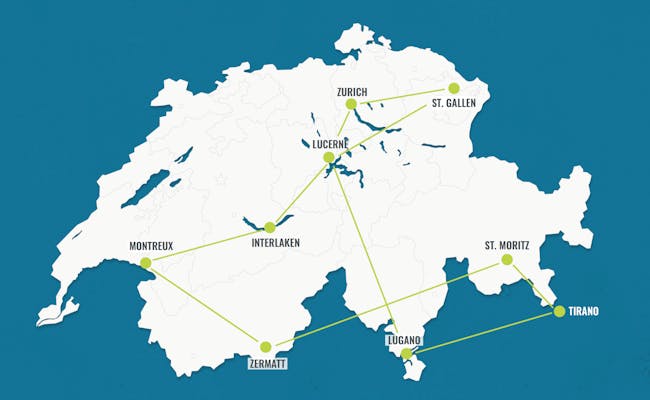
Highlights on this route:
Explore Zürich in the morning at your own pace, rent a free bike with "Züri rollt", or join a guided city tour. After the tour, grab a take-away lunch and hop on a train to St. Gallen.
Spend the afternoon exploring the old town of St. Gallen. With its UNESCO-protected Abbey District, towering cathedral, and impressive Abbey Library, this city has a lot to offer.
Don't miss the recreational area “Drei Weieren.” You can get there either by the Mühleggbahn or by walking up one of the many stairs. Alternatively, you can visit the Peter & Paul Wildlife Park or quench your cultural thirst in one of the many museums.
The best place to relax is definitely in the “Drei Weieren.” Here, you can go swimming or take a walk in the woods. Plus, you get an amazing view over the entire city, Lake Constance, and even into Germany.
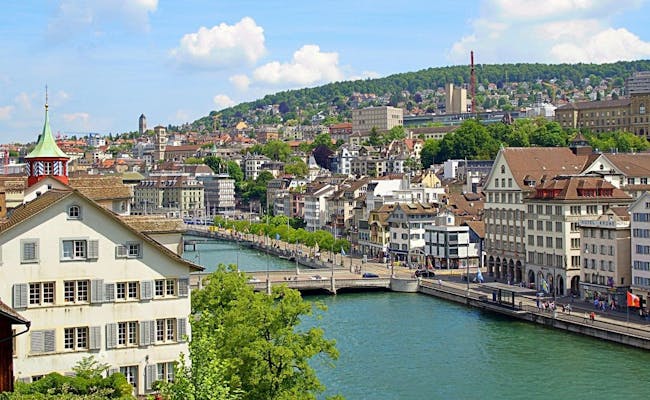
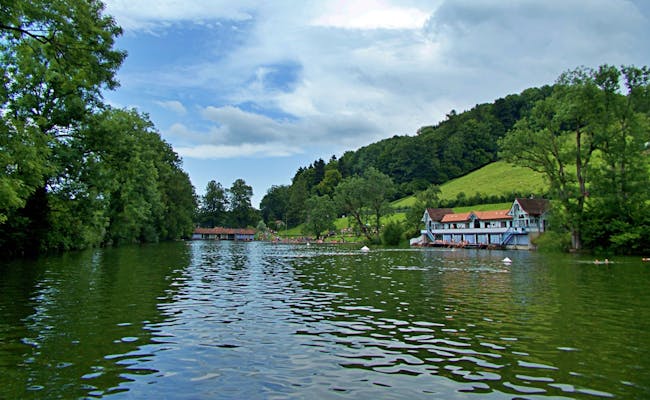
Spend some time in St. Gallen after breakfast and then head to the shores of Lake Constance. This lake is 63 km long and up to 14 km wide and is divided among Germany, Austria, and Switzerland. It's one of the largest lakes in Europe and easily reachable by train from St. Gallen.
In this tri-national region, there are plenty of sights and activities to discover. For example, there's the picturesque city of Constance in Germany, which is just a short walk from Kreuzlingen. Most Swiss head there for affordable shopping. But Constance has a lot more to offer than just great shopping.
With its charming old town, a variety of cafés, restaurants, ice cream parlors, and peaceful spots by the lake, Constance attracts many visitors in the warmer months. If you're interested in fish and other underwater creatures, Sea Life is always a great option when the weather isn't cooperating.
Of course, you don't have to leave the country to fully enjoy Lake Constance. Visit one of the many beaches, go swimming, take a boat ride, rent a stand-up paddleboard, grab a bike and follow the cycling paths, or take a stroll along the lakeshore.
The canton of Thurgau, which makes up the majority of the Swiss portion of Lake Constance, is famous for its apple trees. One of the hikes we recommend in this area is the Altnauer Apple Trail. It's especially idyllic when the trees bloom in April and May or during the harvest time in autumn. The trail is divided into three separate paths, each equipped with informative signs on various topics. If you combine all three paths, you'll learn everything there is to know about apples. Plus, there are plenty of opportunities along the way to buy and taste various apple products.
After exploring the area, take the train back to St. Gallen for another night.
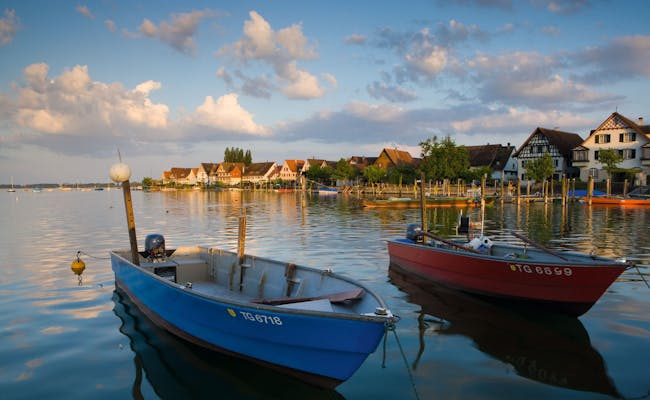

Luckily, you don’t have to leave St. Gallen until noon today. So, spend the morning doing what you didn’t manage to get done over the last two days. Get yourself some takeaway lunch around noon and take the Voralpen Express to Lucerne.
Of all the scenic train rides in Switzerland, this one is definitely less touristy. There are no large panoramic windows and no friendly voice telling you which viaduct you just crossed.
But that doesn't make the trip any less worthwhile.
We recommend breaking your journey halfway and getting off in Rapperswil. This town is a hidden gem at the lower end of Lake Zurich. Visit the castle, spend some time with the deer in the castle garden, swim in Lake Zurich, and stroll along the idyllic waterfront promenade.
A great place to relax is the meadow behind OST, the University of Applied Sciences in Rapperswil. You can’t miss it if you head towards the lake from the train station.
If you feel like a light walk, follow the wooden path and the footbridge over the lake to Pfäffikon. You’ll cover three kilometers of the Camino de Santiago, a pilgrimage route that leads from various places in Europe to Santiago de Compostela in Spain.
When you’re ready to continue, hop on the next train to Lucerne and spend the afternoon exploring the city. Walk across the Chapel Bridge, wander through the Old Town, relax by the lake, or visit the Glacier Garden with the famous Lion Monument.


If you're visiting Switzerland between April and October, you're in luck. If you don't leave Lucerne on a Monday, you have the chance to travel over the Alps to Ticino with the Gotthard Panorama Express.
On the first leg, a steamship will take you on a three-hour journey across Lake Lucerne from Lucerne to Flüelen. There, the panoramic train awaits, ready to take you to Lugano.
Before the Gotthard Base Tunnel opened in 2016, this was the only way to reach Ticino by train. Nowadays, since the opening of the longest tunnel in the world, the old tunnel is only used for tourism purposes.
You'll arrive in Lugano around 4:00 PM, giving you plenty of time to explore the city and its surroundings. You can find a wealth of ideas for your time in and around Lugano in tomorrow's description.
Since you'll be spending the next two nights in Ticino, you're entitled to the fantastic Ticino Ticket. You'll receive it when you check in at your accommodation. With this handy guest card, you can use public transport throughout Ticino for free. You'll also get various discounts at other attractions and activities.
Get ready to explore the Italian part of Switzerland in all its glory. With so many activities to choose from, you won’t be bored today.
First, we recommend heading to one of the two river valleys: Maggia or Verzasca. Both are perfect for hiking, spending time by the river, or taking a refreshing dip. Don't forget to pack your picnic! In both valleys, there are countless spots to take a break. One of our favorite places is right under the famous stone bridge in Lavertezzo.
If you prefer calmer waters to cold mountain streams, you should visit Lake Maggiore or Lake Lugano. Both lakes are stunning and offer more photo opportunities than you can imagine.
Other popular destinations in Ticino include the inspiring artistic town of Ascona near Locarno and the city of Lugano further south.
If you want to brush up on your knowledge of Swiss geography, visit Swissminiatur in Melide just outside Lugano. It’s a miniature version of Switzerland with incredible attention to detail.
If you're an adrenaline junkie, at the end of the Verzasca Valley, there’s the 007 Bungy. You might have seen this 220-meter jump in the James Bond film GoldenEye. If you decide to take the plunge from the dam, don’t forget to share your photo with us. We’d love to see it… 🙂
At the end of the day, head back to Lugano. Enjoy another evening in this charming city before you continue your journey to St. Moritz tomorrow.
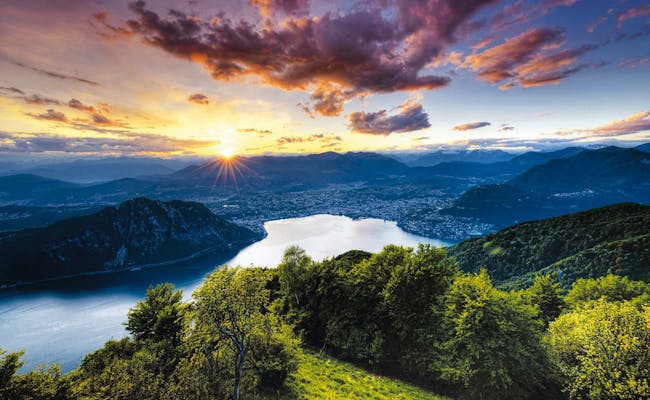

Today, you're spending a few hours crossing the Alps from Lugano to St. Moritz. Your journey takes you over the Italian border to Tirano and up to the highest point of the Bernina Express line. You'll pass sparkling glaciers and crystal-clear mountain lakes, finally arriving in the famous resort town of St. Moritz.
On the first leg, the Bernina Express bus takes you through the stunning wine region of Valtellina to Tirano, right at the Swiss-Italian border.
From here, it’s all uphill.
On your way up to Ospizio Bernina, the highest point of the Bernina Express at 2,253 m above sea level, you’ll cross the circular viaduct in Brusio. Here, the train makes a full 360-degree turn to gain height.
At Ospizio Bernina, you've gained quite a bit of altitude, and the outside temperature is noticeably cooler than a few hours ago. From here, it’s just a short ride until you reach your destination for the day.
After such a long day, you might want to stretch your legs along the promenade of Lake St. Moritz.
You’ve earned it.
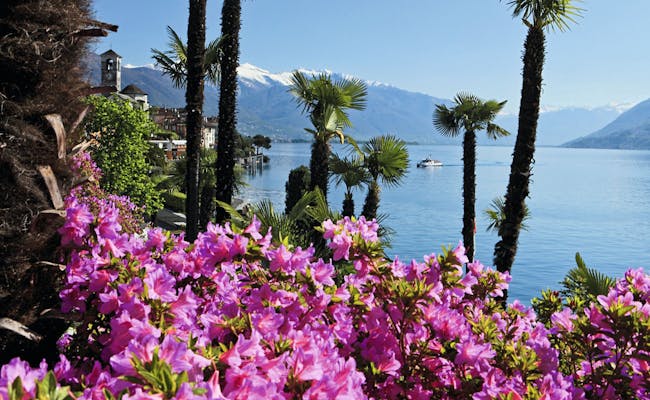

St. Moritz is all about outdoor adventures, whether in summer or winter. Whether you want to cycle, hike, stand-up paddle, swim, windsurf, ski, snowboard, snowshoe, cross-country ski, or simply take a stroll, you’ll find everything your heart desires here.
Just a short drive away from St. Moritz is Lake Silvaplana, a stunning spot to enjoy some of these activities.
When it comes to culinary delights in the Engadin, we recommend two things. First, don’t miss out on a bowl of Bündner barley soup. This soup, made with barley, vegetables, and meat, is a traditional dish from the region. It warms you up on a chilly day like nothing else.
Second, treat yourself to a slice of Engadin nut cake. This rich, delicious pastry brings back the calories you were trying to burn off, but it’s more than worth it.
Back in St. Moritz, you can spend the rest of the day wandering through the town. While St. Moritz isn’t quite as charming and mystical as other villages in the area like Samedan or La Punt, it’s great for a bit of window shopping. And if you’re lucky, you might even spot a celebrity or two.

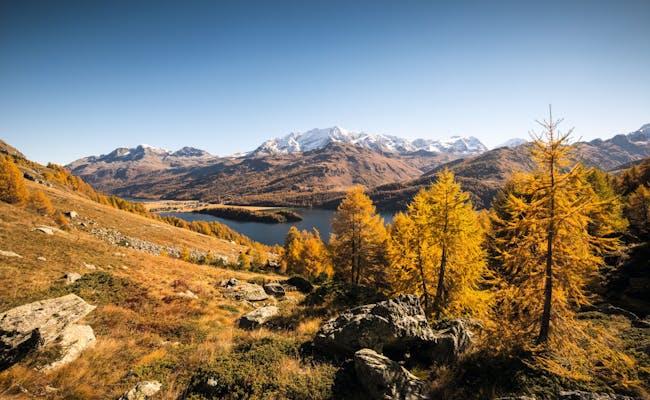
Today, you’ll be hopping on the Glacier Express from St. Moritz to Zermatt. This ride on the "slowest express train in the world" is a unique experience. Throughout the journey, you'll be treated to some of the best views the Alps have to offer.
The train departs St. Moritz twice daily in the morning. The schedule changes throughout the year, and there are some trains that don’t travel the entire route between St. Moritz and Zermatt. To find your connection, check the current timetable in advance.
There’s a reason why the Glacier Express is one of the most popular train routes in Switzerland. What makes this journey so unforgettable are the stunning views that will accompany you the whole way. The train takes you over 291 bridges, through 91 tunnels, across three cantons, and through two language regions.
The trip takes just over 8 hours, and depending on when you leave St. Moritz, you’ll arrive in Zermatt between 5:00 PM and 6:00 PM. Once you arrive, you can spend the rest of the day strolling through the charming mountain village and enjoying the sight of the majestic Matterhorn.
Provided it isn’t shrouded in clouds.

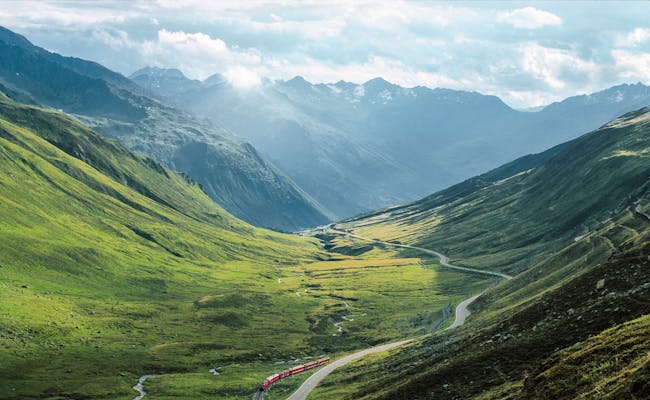
Like in St. Moritz, the mountains and nature are at the heart of Zermatt. If you came to Switzerland for the breathtaking views of the mountains, you will love it here.
Numerous hikes and walks of all difficulty levels will take you to places you never even knew existed. For example, the popular Zermatt 5-Lakes Trail takes about 2.5 hours to complete. It passes by five crystal-clear mountain lakes and offers stunning views of the Matterhorn along the way.
Another adventure that might leave you a bit dizzy is crossing the world's longest pedestrian suspension bridge in Randa. It's an impressive 494 meters long and spans across the valley. The circular route to the bridge starts and ends in Randa, just 15 minutes by train from Zermatt.
If you prefer to skip the hike altogether and want an easier way to see the mountains, we recommend taking the train up to Gornergrat. After an incredibly steep train ride, you'll find yourself at an elevation of 3,089 meters above sea level. Right in front of the Gorner Glacier and the Matterhorn. Don't be surprised if you find yourself completely out of breath when climbing the stairs to the viewing platform. It's not you; it’s the thin air.
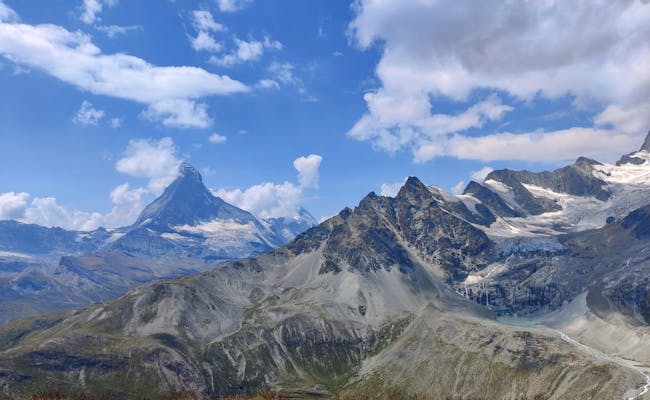

In Zermatt gibt's garantiert mehr als genug zu erleben und entdecken. Heute ist der perfekte Tag, um alles nachzuholen, was du gestern nicht geschafft hast.
Übrigens ist Zermatt auch im Winter ein heiß begehrtes Skigebiet. Falls du also Skifahren gehen möchtest, bist du hier genau richtig.
Sobald du bereit bist, die frische Alpenluft hinter dir zu lassen, steig in den Zug und fahr nach Montreux am Genfersee. Verbring den Rest des Tages mit einem gemütlichen Spaziergang entlang der Promenade von Montreux und schau dir die Freddie Mercury-Statue vor der Markthalle an.
Wenn du das berühmte Schloss Chillon erkunden willst, kannst du der Promenade bis zum Schloss folgen oder in den Bus steigen. Auch Passagierschiffe verkehren regelmäßig zwischen Montreux und dem Schloss Chillon.
Alternativ kannst du auch in die andere Richtung in die Lavaux-Weinberge fahren. Nur eine kurze Zugfahrt westlich von Montreux findest du die berühmten Lavaux-Weinberge, die zum UNESCO-Weltkulturerbe gehören. Um die atemberaubende Aussicht zu genießen, steig in Cully oder Epesses aus und folge dem ausgeschilderten Wanderweg durch die Weinreben.
Wir wissen, dass das heute ein recht volles Programm ist. Wir empfehlen dir nicht, alles auf einmal zu machen. Aber jetzt, wo du deine Optionen kennst, kannst du deinen Tag nach deinen Wünschen gestalten.
Und vielleicht angepasst an das Wetter…
Today you can look forward to some breathtaking scenery. Spend a few hours in and around Montreux in the morning before continuing your journey. You’ll depart the Lake Geneva region on the panoramic train and start your ascent into the Alps on the Golden Pass Line. After passing through a few tunnels, you’ll arrive in the Bernese Oberland, our favorite part of the entire train journey.
This region is a dream for mountain lovers, capturing nearly everything that makes Switzerland special. There's an abundance of lakes, mountains, lush meadows with grazing cows, glaciers, countless hiking trails, stunning landscapes, and charming little villages in this area.
Even if you don’t have enough time to hop off along the way, the ride through this picturesque region is something you’ll likely never forget. Once you leave the Bernese Oberland and descend from the hills, you'll arrive in Zweisimmen, where you'll need to switch to another train.
The final leg of the journey takes you past Spiez and along Lake Thun before you eventually reach Interlaken. Spend the rest of your day exploring this popular town and get ready for the coming days. You'll be spending time in this adrenaline-pumping and scenically stunning place.
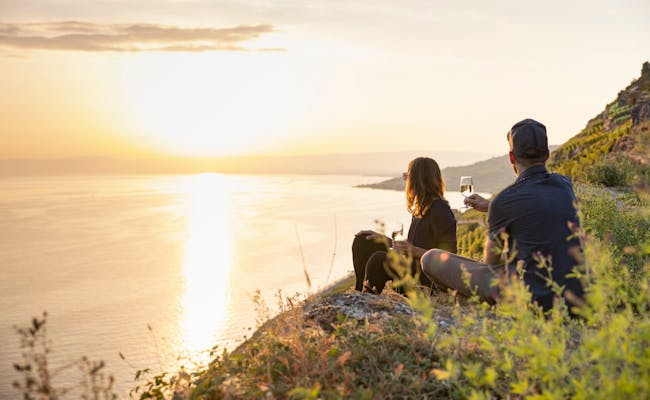
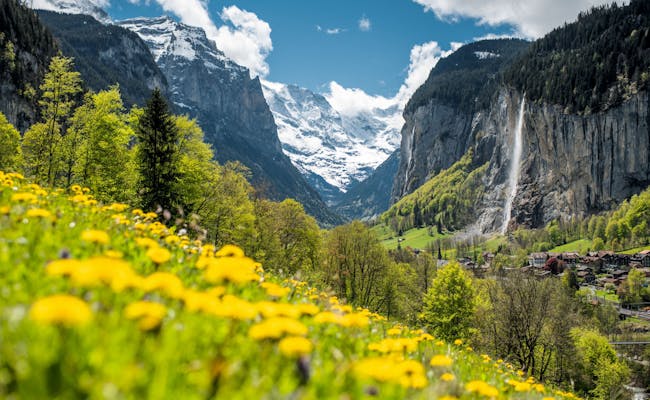
Today you've got more activities to choose from than you can imagine. It all depends on your budget, but in an adrenaline-fueled place like Interlaken, the sky’s the limit.
If at all!
Skydiving, paragliding, canyoning, and jet boating are popular activities that will definitely get your adrenaline pumping.
A more relaxing option is a boat ride on Lake Thun or Lake Brienz. On both lakes, you'll be treated to incredible views, and you'll wish you never had to leave. If you want to make a stop during one of the boat trips, you can get off at Giessbach (Lake Brienz), at the St. Beatus Caves, or in Spiez (Lake Thun).
The Jungfrau region around Interlaken is also a fantastic spot for hikers. The number of hiking trails is virtually endless. No matter your fitness level and ambitions, you'll find something to suit your taste here.
Of course, the famous Jungfraujoch—also known as the Top of Europe—is the number one destination everyone wants to see. With the Jungfrau Railway, you’ll ride up to the highest railway station in Europe and find yourself amidst stunning mountain and glacier views.
If you’re looking for a more budget-friendly alternative to the Jungfraujoch, we recommend visiting the Schilthorn, Schynige Platte, Grindelwald First, or the Männlichen instead. The trips to these mountains and the views from the summit won’t disappoint.
More attractions in and around Interlaken include: the Ballenberg Open-Air Museum, the chocolate workshop at the Funky Chocolate Club, the two mountain lakes Blausee or Oeschinensee, and the Aare Gorge. And let’s not forget charming towns and villages like Brienz, Spiez, Thun, Lauterbrunnen, or Grindelwald.
We could go on like this forever. But you’d probably just end up annoyed that you can’t spend the whole week here.
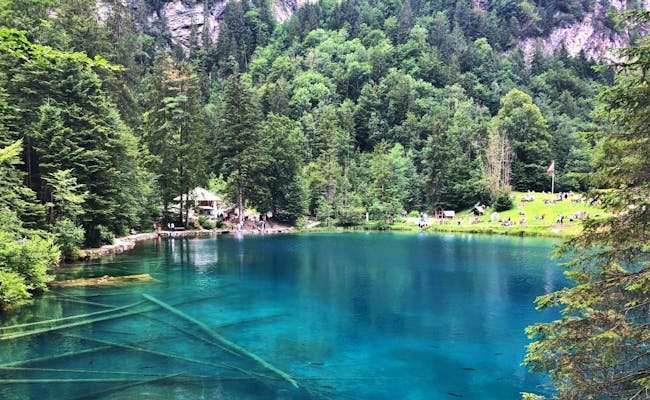

We assume you didn't manage to do everything you had planned yesterday. That's why you have nearly a whole day to explore Interlaken and its surroundings today. Take care of what you need to do before heading to Lucerne on the Golden Pass Line.
The Golden Pass Line is a popular scenic route from Lucerne to Montreux, operated by several train companies. It connects the heart of Switzerland with the shores of Lake Geneva.
This scenic route passes by eight lakes, traverses six different cantons, crosses three mountain passes, and connects two language regions. Today's segment between Interlaken and Lucerne is operated by the Zentralbahn and takes just under two hours.
Spend the rest of the evening exploring Lucerne. You probably still have a few things left to check off that you didn't get to on Day 3.
Fortunately, you don't have to rush today and can enjoy Lucerne until the afternoon or even evening. So, you have plenty of time to do everything you didn't manage to get to yesterday.
A popular day trip from Lucerne is a visit to Mount Rigi. To get there, you can either leave your luggage at your accommodation in Lucerne or at the train station and take the train to Arth Goldau. From there, the Rigi Railway - the first mountain railway in Europe - will take you to the Rigi Kulm mountain station in a 45-minute ride.
If Rigi isn't shrouded in clouds, you'll have a spectacular view of the Alps, Lake Lucerne, and other surrounding lakes. Just follow the signs to the viewpoint after you get off at Rigi Kulm.
Once you've taken enough photos, you can either take a break at the restaurant, ride the train down to Vitznau, or go for a hike. With over 120 kilometers of hiking trails, you'll have plenty of options.
When you arrive in Vitznau, the passenger boat to Lucerne will be waiting for you. Keep your camera handy, as the ride is incredibly scenic and offers even more breathtaking views.
Back in Lucerne, you can pick up your luggage and head back to Zurich.


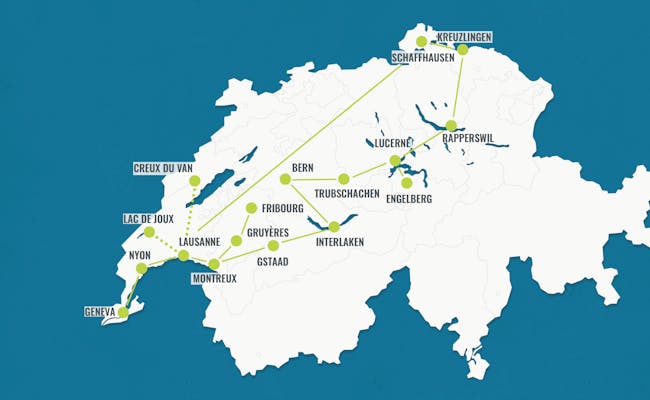
Highlights on this route:
In the morning, you can explore Geneva on your own, rent a free bike from "Genève Roule," or join a city tour. After the tour, grab a takeaway lunch and take the train to Nyon.
This medieval town by Lake Geneva is surrounded by charming vineyards. Follow the path through the vines to Nyon Castle and enjoy the view. After your lunch break, take the train to Lausanne. Check into your accommodation and use your free Lausanne Transport Card.
Lausanne's picturesque old town is built on three hills and surrounded by numerous vineyards. It's home to the International Olympic Committee and the only metro in Switzerland.
If you want to hear something interesting, head to the cathedral between 10:00 PM and 2:00 AM and watch the tower. Since 1405, night watchmen have announced the current time from up there in the night.
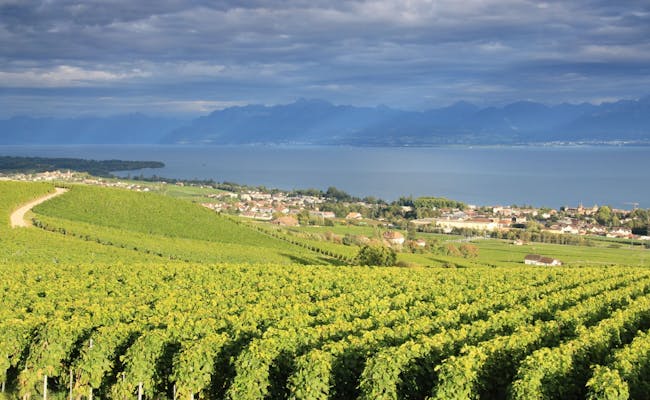

After breakfast, buy enough food for the day and head straight to Le Pont, a village in the Valleé de Joux. The train ride from Lausanne to the valley takes roughly an hour. Vallée de Joux is part of the Jura mountains and offers countless hiking options. In the centre of the valley, you’ll find a peaceful lake called Lac de Joux.
By far the most popular spot in the area is the distinctive mountain of Dent de Vaulion. Hiking the circular path from Le Pont takes around three hours. The views from Dent de Vaulion across the Vallée de Joux, all the way to Lake Geneva and way into France, make this place extra special.
Since you’ve got all day up here, spend as much time in the area as you like. Hang out by Lac de Joux, walk the path around the lake or do whatever else your heart desires. Whenever you feel like it, catch the train back to Lausanne and spend the rest of the day exploring the city.
If you’re in for a bit of a challenge, we recommend hiking to Creux du Van instead. This natural, one-kilometre wide amphitheatre got its shape from constant erosion by water and ice. Marmots, mountain goats, deer and various birds inhabit this area.
The starting point of the hike is in Noiraigue, a village that takes roughly an hour and a half to reach from Lausanne. Hiking to Creux du Van is pretty tough and will take up to five hours. Spend as much time as you like at the amphitheatre before heading back to Noiraigue and Lausanne.
Of course, Switzerland gets its fair share of bad weather and we don’t suggest you do this hike if it’s raining. The rocks can get slippery and dangerous when they’re wet and we don’t want you to get hurt!
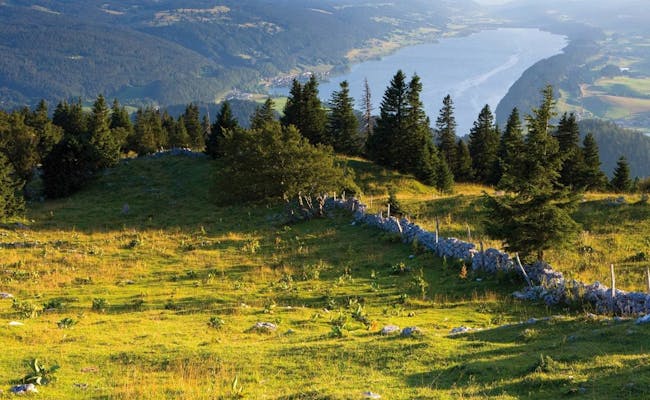
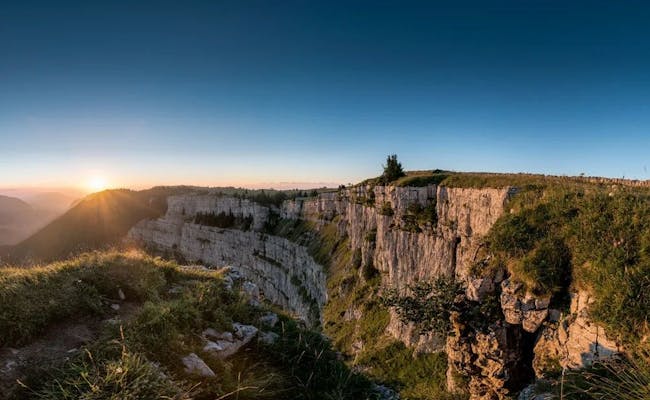
Today, there's no rush to leave Lausanne. If you feel like it, you can spend the morning exploring the city a bit more. Maybe visit the Lavaux vineyards?
When you're ready to head out, hop on the train to Schaffhausen. This city boasts a charming old town. You’ll find a total of 171 bay windows here, which is more than any other city in Switzerland. Once you've checked them all out and explored the rest of Schaffhausen, you can head up to the Munot and enjoy the view over the city.
The main reason people travel to Schaffhausen is the Rhine Falls. The mighty Rhine Falls draws visitors from around the world and is an impressive natural spectacle. Access to the falls from the north bank is free, while visiting from the Castle Laufen in the south costs 5 CHF. Take your time to fully immerse yourself in the beauty of the Rhine Falls. When you're ready, head back to Schaffhausen.
Since you have the whole day, it's not enough to just stay at the Rhine Falls. You can spend some time in the city, join a city tour, or even leave Schaffhausen entirely.
Not too far away is the picturesque old town of Stein am Rhein. Small yet incredibly charming, Stein am Rhein is the perfect spot to admire the beautifully painted houses. Once you've seen enough, you can take a boat ride up the Rhine and back to Schaffhausen. This boat trip takes about two hours and is considered one of the most beautiful in Switzerland.
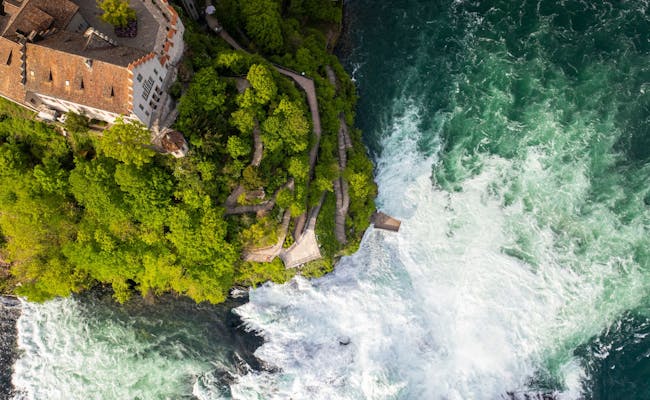
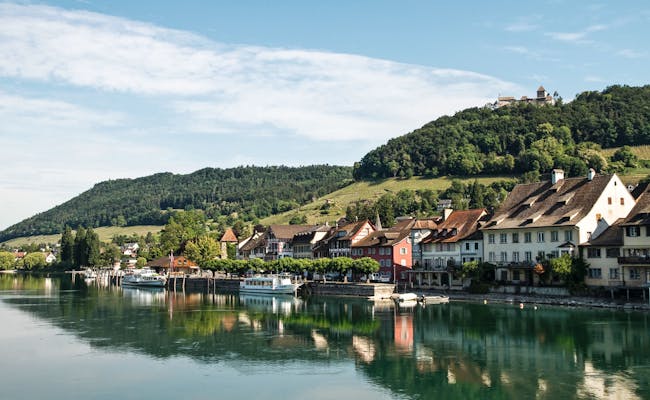
After you've had breakfast and maybe strolled around Schaffhausen a bit, hop on the train to Kreuzlingen by Lake Constance.
Lake Constance is 63 kilometers long and up to 14 kilometers wide, and its shores are shared with Germany, Austria, and Switzerland. This tri-national area offers a host of sights and activities for you to discover.
For instance, the picturesque town of Constance in Germany is just a short walk away from Kreuzlingen. Most Swiss residents head there for affordable shopping, but Constance has much more to offer than just bargain stores.
With its charming old town, numerous cafés, restaurants, ice cream parlors, and quiet spots by the lake, Constance attracts many visitors in the warmer months. If you're interested in fish and other underwater creatures, the Sea Life is always a good option when the weather isn't great.
Of course, you don't have to leave Switzerland to fully enjoy Lake Constance. Visit one of the many beaches, go for a swim, take a ride on a passenger ship, rent a stand-up paddleboard, grab a bike and follow the paths, or take a stroll along the lakeshore.
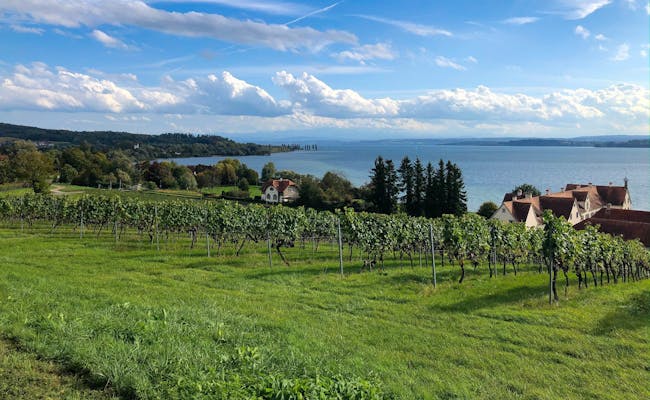
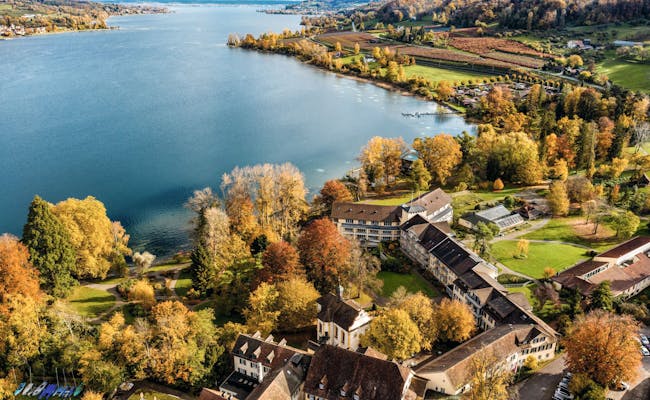
In addition to yesterday's options, there are a few more ways to spend your day in the area. The canton of Thurgau, which makes up most of the Swiss part of Lake Constance, is famous for its apple trees. One of the hikes we recommend in this area is the Altnauer Apple Trail. It's particularly picturesque when the trees bloom in April and May or during the harvest season in autumn.
The trail is divided into three separate paths, each equipped with informative signs on various topics. If you combine all three paths, you’ll learn everything there is to know about apples. Plus, there are plenty of opportunities along the way to buy and taste different apple products.
Other interesting places around Lake Constance include the towns of Romanshorn, Rorschach, and of course Kreuzlingen, where you’re currently staying.
If you’ve seen enough and want to head to St. Gallen, you can also take a trip to this beautiful city. With the UNESCO-protected Abbey District, its impressive cathedral, and the remarkable Abbey Library, this city has a lot to offer.
Don’t miss the recreational area “Drei Weieren”. You can reach it either by the Mühleggbahn cable car or on foot via one of the many stairs. Alternatively, you can visit the Peter & Paul Wilderness Park or quench your cultural thirst in one of the many museums.
The best place to relax is definitely at the “Drei Weieren”. Here you can go swimming or take a walk through the woods. You also have a fantastic view over the whole city, Lake Constance, and even into Germany.
You’ve probably seen enough of Lake Constance by now so grab your bags in the morning and travel to St. Gallen. From here, you can catch the Voralpen-Express to Lucerne. Out of the many scenic train rides in Switzerland, this is one of the less touristy ones. It doesn’t come with fancy panorama windows and there’s no friendly voice pointing out what viaduct you just crossed.
But that doesn’t make it any less worth riding.
We recommend breaking up your journey halfway in and getting off in Rapperswil, a real hidden gem of a city. Head up to the castle, spend some time with the deer in the castle’s garden, go for a swim in Lake Zurich and walk along the idyllic esplanade. An excellent spot to relax is the lawn behind OST, the technical college of Rapperswil. You can’t miss it when you head toward the lake after leaving the train station.
If you’re looking for an easy walk, follow the wooden footbridge and the connecting walkway across the lake to Pfäffikon. In doing so, you’ll be completing three kilometres (1.8 miles) of the Camino de Santiago trail, a pilgrim route leading from different places across Europe to Santiago de Compostela in Spain.
Once you’re ready to move on, catch the next train to Lucerne and transfer to the train to Engelberg. This versatile mountain village is situated about 25 kilometres (15 miles) south of Lake Lucerne and lies at an altitude of 1.013 metres (3.323 feet) above sea level. At 3.239 metres (10.626 feet), towering over the other peaks surrounding Engelberg, is mighty Mount Titlis.
Since you’ll arrive in Engelberg mid- or late afternoon, there won’t be enough time to head up there right away. So let’s leave that until tomorrow to make sure you don’t feel rushed. Instead, what you can do this afternoon is check out the centre of Engelberg. Or more specifically, the Benedictine monastery.
This ancient monastery, which was founded in 1120, is still inhabited by 30-odd monks. You can either visit the premises on your own or join a guided tour.
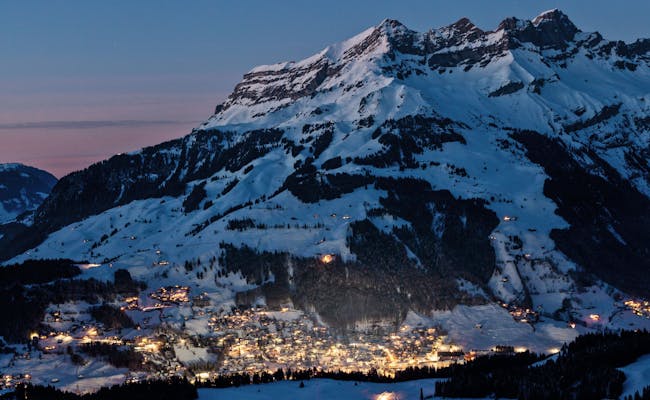
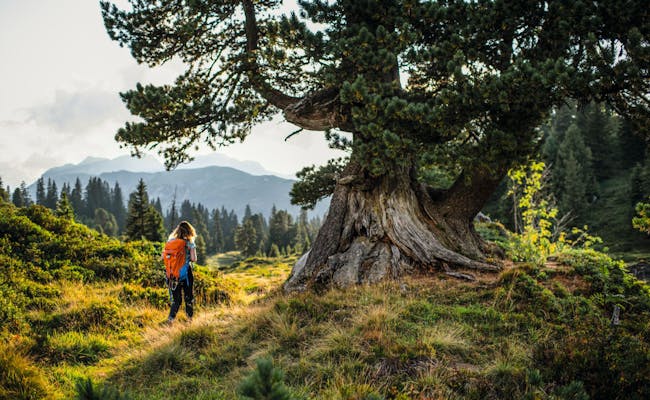
Like many places in the Swiss Alps, Engelberg focuses on outdoor activities. The most popular destination in this area is, without a doubt, Titlis. From Engelberg, you can reach the summit via two gondolas. One of them is the Rotair, the world's first rotating cable car that turns 360°. At the top, you’ll be greeted by stunning panoramic views. Additionally, there's a spectacular glacier cave and the thrilling Titlis Cliff Walk by Tissot.
There are endless hiking opportunities in Engelberg, catering to all tastes. A recommended hike is the "Kitzelpfad" in Brunni. Here, you take off your shoes and walk over various types of ground. While your feet are tickled by nature, you can also enjoy the perfect view of Titlis.
And what would a proper hike be without one or two mountain lakes...?
A slightly more challenging hike called the Four Lakes Hike will take you past—yep, you guessed it—four mountain lakes. Since this hike takes nearly five hours, we recommend it only if you feel fit enough.
If you’d prefer a less strenuous day, you can choose the wheelchair-accessible path around Engelberg. This two-hour hike starts at the monastery in the center of Engelberg and takes you to the picturesque Aa River and back. Even though you won’t ascend any peaks on this hike, you’ll still have beautiful views of the mountains.
In winter, Engelberg transforms into a true paradise for snow lovers. Whether you enjoy skiing, snowboarding, snowshoeing, hiking, cross-country skiing, ice skating, or sledding, you'll find just what you’re looking for. Engelberg is especially popular with freeriders.
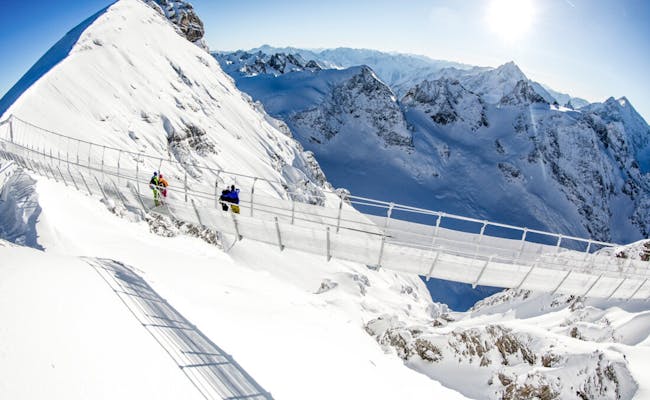
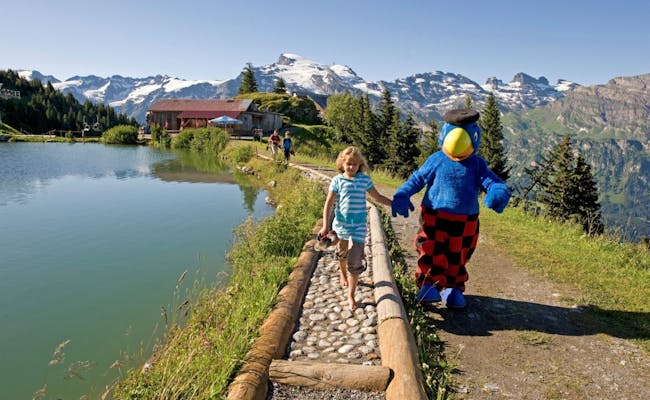
Today you can catch up on what you couldn't finish yesterday in Engelberg. When you're ready to continue your journey, hop on the train to Lucerne. The ride takes less than an hour and is super easy.
Once you arrive, you can drop off your bags at the station and spend a few hours exploring this charming city. Stroll across the Chapel Bridge, wander through the Old Town, relax by the lake, or check out the Glacier Garden with its famous Lion Monument.
No matter what you do, make sure not to spoil your appetite. You'll need every last bit of room in your stomach for the feast that's coming.
When you're ready to move on, take the train to Trubschachen. This train splits along the way, and only the front part goes through the picturesque Emmental to the Kambly factory. When you’re at the platform in Lucerne, keep an eye on the display to ensure you're boarding the right part of the train.
You don’t need a ticket for the Kambly factory store right next to the station in Trubschachen. Entry is free. You can spend as much time as you want here, and taste up to 100 varieties of delicious biscuits.
Unfortunately, you can't tour the factory directly or watch the production of this traditional Swiss treat. However, there’s a cinema in the store where you can learn more about the Kambly family business.
If you’re feeling stuffed or just can't eat any more sweets, head on to Bern. To help digest your Kambly overload, you can take a walk through the capital of Switzerland. For a stunning view over Bern, we recommend heading up to the Rose Garden.
Today, you have a wide range of activities to choose from. Join a city tour or explore Bern on your own. Stroll through the old town, visit the Bear Park, check out the Federal Palace, and take a walk back to the Rose Garden for some great views.
You can also head to Gurten, Bern's local mountain, watch the animals at the Dählhölzli Zoo, or visit the Botanical Garden. Take the lift at the train station and enjoy the view from the Grosse Schanze, or go swimming in the Aare or at Weyermannshaus.
Bern is also conveniently located near a variety of exciting day trip destinations. For instance, you could easily visit Thun and Interlaken, both stunning places with spectacular lake and mountain views.
If you're interested in mountain lakes, you have two great options from Bern. Oeschinensee and Blausee are both easily accessible and well worth a visit. The crystal-clear waters of these lakes will captivate you. Whatever you do today, return to Bern for your last night whenever you’re ready.
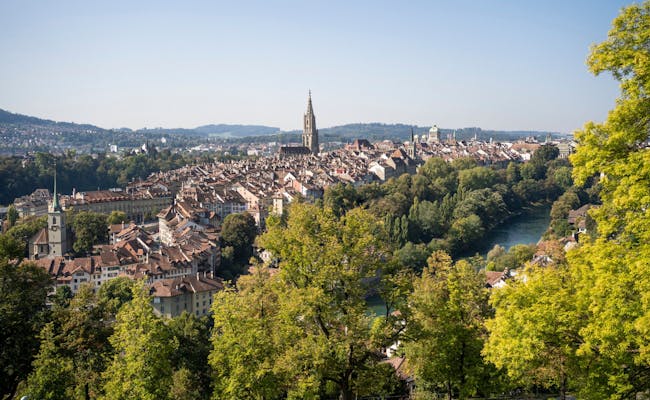
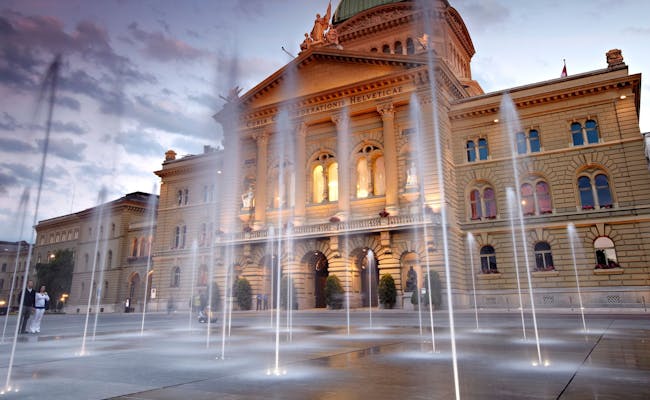
By now, you're probably ready to leave Bern. So pack your bags in the morning and take the train to Gstaad. Today, a wealth of scenic delights awaits you. From Spiez to Zweisimmen and onward to Gstaad, you'll travel on the Golden Pass Line. This popular scenic train route connects the heart of Switzerland in Lucerne with the shores of Lake Geneva in Montreux.
After transferring for the second time in Zweisimmen, the ascent through the Bernese Oberland to Gstaad begins. This region is a true paradise for mountain lovers and encompasses just about everything that Switzerland has to offer: lakes, mountains, lush meadows with grazing cows, glaciers, plenty of hiking trails, breathtaking landscapes, and charming little villages abound in this area.
In Gstaad, you have several options for spending your afternoon. As this area is a haven for hikers, you'll be spoiled for choice. One possible hike takes you to Lauenensee, a mountain lake surrounded by moorland.
A trip that's easily doable from Gstaad is a visit to the impressive Glacier 3000. After a 35-minute bus ride to Col du Pillon, you'll arrive at the valley station of the cable car. Hop on the gondola and enjoy the ride. Once you reach the top, breathtaking 360° views of the Alps await you.
On a clear day, you might spot some of the most famous mountain giants of the Alps, such as the Matterhorn, Mont Blanc, and the renowned trio of Eiger, Mönch, and Jungfrau. If you’re feeling adventurous, you should take on the Peak Walk to Scex Rouge. This is the world's first suspension bridge that connects two peaks. At Glacier 3000, there are also other activities, like the toboggan run or a hike across the glacier.
If you stroll through Gstaad in the evening, keep an eye out for celebrities. This place is often frequented by famous faces, just like St. Moritz.
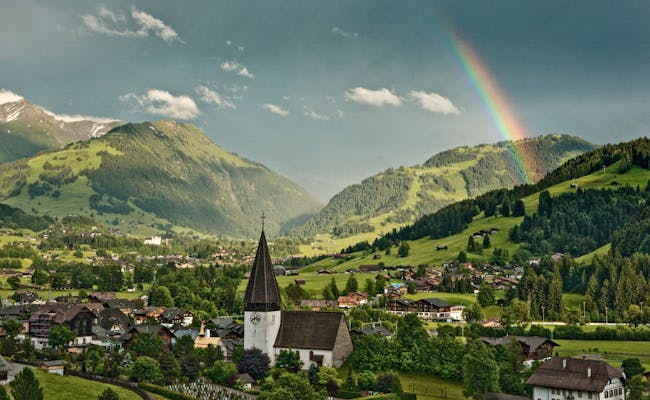

It's time to say goodbye to this beautiful region. After breakfast, hop on the Golden Pass train and continue your scenic journey. After leaving the Bernese Oberland and heading down the hills, you'll arrive in the French-speaking part of Switzerland.
The Golden Pass Line ends in Montreux, where you'll spend the afternoon. Enjoy a few hours in this lovely area by Lake Geneva before you travel to Bern.
Make your way to the promenade and check out the Freddie Mercury statue in front of the market hall. If you want to visit the famous Château de Chillon, you can either walk along the promenade to the castle or take the bus. Passenger ships also regularly cruise between Montreux and Château de Chillon.
Alternatively, you can head in the other direction to the Lavaux vineyards. Just a short train ride west of Montreux, you'll find the renowned Lavaux vineyards, a UNESCO World Heritage site. To enjoy the stunning views, get off in Cully or Epesses and follow the marked hiking trail through the vines.
Today is all about cheese and chocolate, as Switzerland is famous for them. So, hop on a train to Gruyères and get ready for a feast in a medieval town.
The Gruyère cheese factory is just behind the train station. Here, you can watch traditional Gruyère cheese being made, and of course, there are plenty of samples to try. Once you're done snacking, you can either take a bus or walk to the town center of Gruyères. This walk will take you about 20 minutes.
The main attraction in Gruyères is probably the castle, which is open to the public and charges 12 CHF for admission. However, the charming cobblestone streets and countless souvenir shops might tempt you to stay longer than you planned.
After exploring Gruyères and maybe picking up a souvenir or two, you can head to Broc to visit La Maison Cailler. In their visitor center, you’ll learn everything about Switzerland's oldest chocolate brand. At the end of the tour, there's a buffet where you can sample a ton of chocolate.
On your train ride back to Montreux, you can try to digest your cheese and chocolate overload. Spend the rest of your day in Montreux.
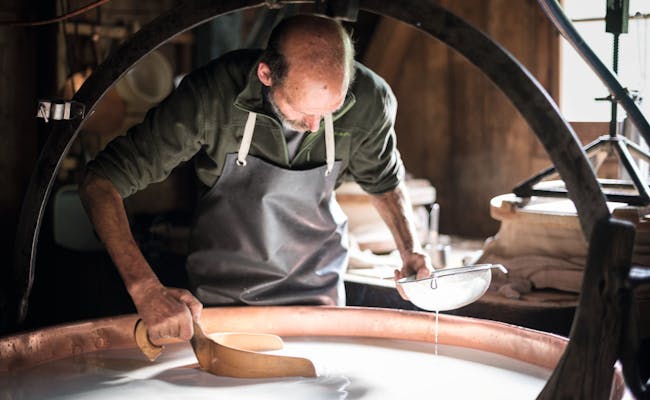

If you still have some time in Montreux, you can spend your morning here. When you’re ready to continue your journey, hop on the train to Fribourg.
In Fribourg, follow the signs for the city tour that lead you through the impressive old town. The signs will guide you through steep alleys, over ancient wooden bridges, down to the Saane River, and past the town’s funicular. For an even better view of your surroundings, climb the 365 steps to the cathedral tower. The Saane River at the foot of the town is a great place to stretch your legs and grab a snack.
Once you’ve seen enough of this medieval town, take the train to Geneva. Spend the rest of your day in the second largest city in Switzerland.

Highlights on this route:
In the morning, you can explore Geneva on your own, rent a free bike at "Genève Roule," or join a guided city tour. After the tour, grab some takeout for lunch and take the train to Nyon.
This medieval town by the shores of Lake Geneva is surrounded by charming vineyards. Follow the path through the vines to Chillon Castle and enjoy the view. After your lunch break, take the train to Lausanne. Check into your accommodation and use your free Lausanne Transport Card.
The picturesque old town of Lausanne is built on three hills and surrounded by numerous vineyards. It hosts the International Olympic Committee and the only metro system in Switzerland.
If you'd like to hear something interesting, head to the cathedral between 10:00 PM and 2:00 AM and watch the tower. Since 1405, watchmen have been announcing the current time from up there in the middle of the night.
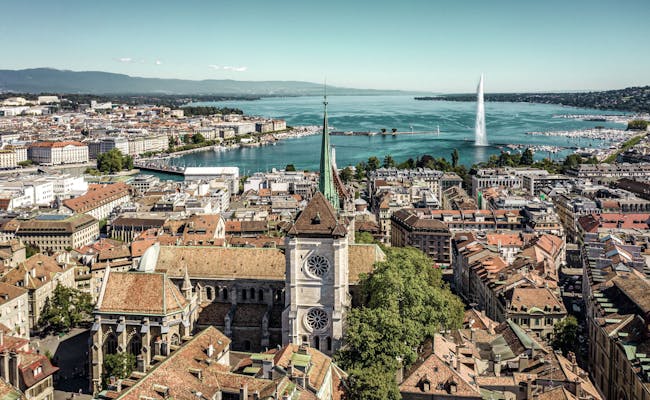
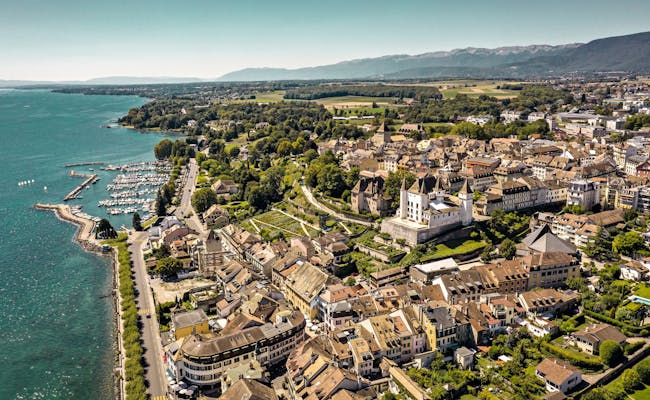
Spend some time exploring Lausanne in the morning before heading off on a day trip to the Lake Geneva region. First, take the train to the Lavaux vineyards, a UNESCO World Heritage site just outside Lausanne.
To enjoy the stunning views, it’s best to get off in Cully or Epesses and follow the marked hiking trail through the vineyards. Once you're done wandering these beautiful paths, continue on to Montreux. This city by Lake Geneva has a lot to offer. Head to the lakeside promenade and check out the Freddie Mercury statue in front of the market hall.
If you're interested in castles, make sure to visit the famous Château de Chillon. To get there, you can either walk along the promenade, take a bus, or hop on one of the regularly running passenger boats.
Even if you don't fancy a tour of the castle, we recommend making a stop there to spend some time by the lake. It’s a great place to relax and take lots of beautiful photos.
At the end of the day, you can return to Lausanne by train or even by passenger boat.
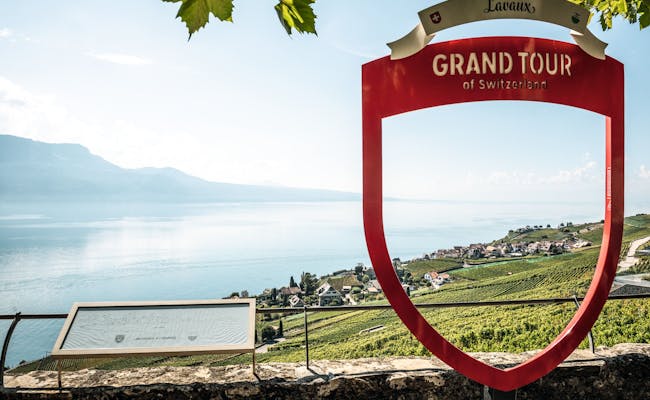
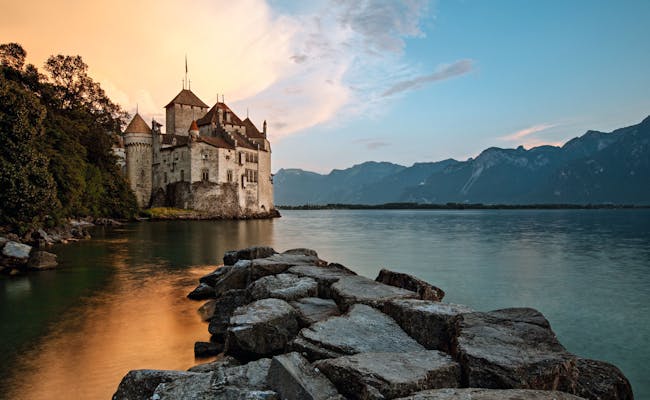
By now, you’ve probably seen enough of Lausanne. So grab your bags after breakfast and head to Bern, the capital of Switzerland. The train ride takes just under an hour. In this charming city, recognized by UNESCO, you’ll have plenty of options for activities. Join a guided city tour or explore Bern at your own pace. Stroll through the old town, walk to the Bear Park, check out the Federal Palace, or head back to the Rose Garden for even more views of the area.
You can also visit Gurten, Bern’s local mountain, watch the animals at Dählhölzli Zoo, or take a look at the Botanical Garden. Take the lift from the train station and enjoy the view at the Great Freestanding, or go swimming in the Aare or Weyermannshaus.
You’ll definitely find enough options to keep you busy in the afternoon. In the evening, we recommend going up to the Rose Garden, where you’ll have an impressive view of the city.
After breakfast, take the train to the charming little town of Murten. The journey takes only half an hour, and you won't even need to change trains. Murten itself is tiny, and you won’t need long to explore the town. Stroll through the historic town center and stretch your legs by the lake.
The area around Murten is perfect for cycling, hiking, swimming, or just enjoying the lake.
By the way, you’ll find the longest freshwater sandy beach in Europe at Lake Murten in Salavaux. This might not impress someone who grew up by the sea, but for a landlocked country like Switzerland, it’s quite remarkable.
Once you’ve had your fill of Murten, hop on the next train to Neuchâtel. Spend the afternoon exploring this beautiful city with its lake views and steep streets. If you want even more amazing views, you should head up to Chaumont, the local mountain of Neuchâtel.
The funicular railway takes you from Le Coudre up to the summit. From here, you can hike down towards Cressier via Trois Cheminées. A bus will take you back to Neuchâtel from Cressier. Alternatively, you can stroll around Chaumont and take the funicular back down.
At the end of the day, you can return to Bern and spend another night in the Swiss capital.
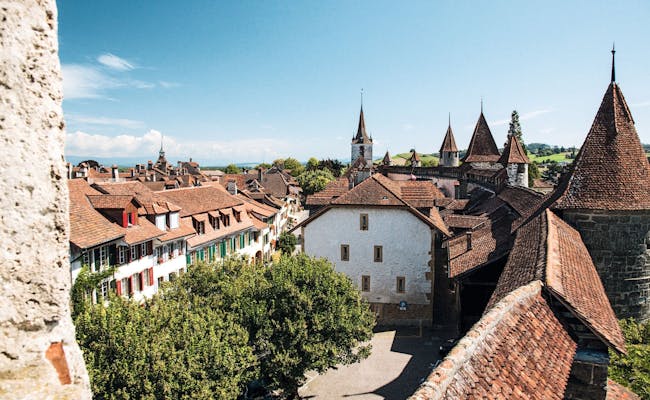
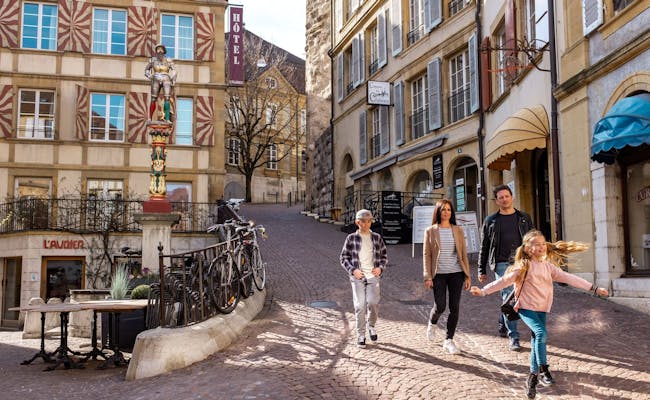
Du kannst heute entscheiden, wie du deinen Tag gestalten möchtest. Eine Möglichkeit wäre, noch etwas Zeit in Bern zu verbringen. Wenn du genug gesehen hast, kannst du auch schon nach Interlaken weiterreisen.
Verbring den Tag in diesem Ort, der zwischen zwei kristallklaren Seen liegt. Die Aktivitäten sind vielfältig und du hast morgen den ganzen Tag Zeit, um Interlaken und seine Umgebung zu erkunden.
Da es in dieser Gegend so viele Möglichkeiten gibt, kannst du dir bereits heute die Vorschläge für morgen ansehen. Vielleicht gibt es ja etwas, das du schon heute von deiner Liste streichen kannst. Hast du Lust auf einen kurzen Ausflug nach Lauterbrunnen oder eine Fahrt auf den Harder Kulm, um die tolle Aussicht zu genießen?
You have more activities to choose from today than you can imagine. It depends on your budget, but in an adrenaline-fueled place like Interlaken, the sky's the limit.
If at all!
Skydiving, paragliding, canyoning, and jet boating are popular activities that will get your adrenaline pumping.
A slightly more relaxing option is a ride on a passenger boat on Lake Thun or Lake Brienz. On both lakes, you'll be treated to stunning views and you'll wish you never had to leave. If you want to make a stop during one of the boat trips, you can get off at Giessbach (Lake Brienz), at the St. Beatus Caves, or in Spiez (Lake Thun).
The Jungfrau region around Interlaken is also an excellent spot for hikers. There are countless hiking trails available. Regardless of your fitness level and ambitions, you'll find something that suits your taste here.
Of course, the famous Jungfraujoch - also known as the Top of Europe - is the number one destination that everyone wants to see. With the Jungfrau Railway, you can ascend to the highest railway station in Europe and find yourself amidst the spectacular mountains and glaciers.
If you're looking for a more budget-friendly alternative to Jungfraujoch, we recommend visiting the Schilthorn, Schynige Platte, Grindelwald First or the Männlichen instead. The journeys to these mountains and the views from the summit won't disappoint.
Other attractions in and around Interlaken include: the Ballenberg Open-Air Museum, the chocolate factory at Funky Chocolate Club, the two mountain lakes Blausee or Oeschinensee, or the Aare Gorge. And let's not forget the charming towns and villages like Brienz, Spiez, Thun, Lauterbrunnen, and Grindelwald.
We could go on forever here. But you’d probably just get annoyed that you’re not spending the whole week here.
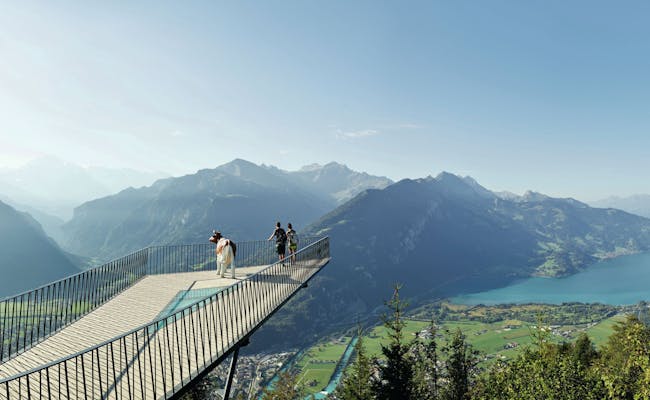

We’re assuming you didn’t get to do everything you’d set your mind to yesterday. This is why you have almost another full day to knock yourself out in and around Interlaken today.
Do what you need to do before heading to Zermatt later on. Once you arrive, spend the rest of the day strolling through this little mountain town and enjoy the sight of the mighty Matterhorn.
Provided it’s not veiled in clouds. Or take a peek at tomorrow's outline for some inspiration of what you could do this afternoon.
In Zermatt, the mountain landscape and nature take center stage. If you came to Switzerland for the spectacular views of the mountains, you're going to love it here.
Numerous hikes and walks of all difficulty levels will take you to places you didn't even know existed. For instance, the popular Zermatt 5-Lake Trail, which takes about 2.5 hours. It leads past five crystal-clear mountain lakes and offers breathtaking views of the Matterhorn.
Another adventure that might make you a bit dizzy is crossing the longest pedestrian suspension bridge in the world in Randa. It is a whopping 494 m long and spans across the valley. The circular route to the bridge starts and ends in Randa, just a 15-minute train ride from Zermatt.
If you'd prefer to skip the hike and see the mountains the easy way, we recommend taking the train up to Gornergrat. After an incredibly steep train ride, you'll find yourself at an elevation of 3,089 m above sea level, right in front of the Gorner Glacier and the Matterhorn.
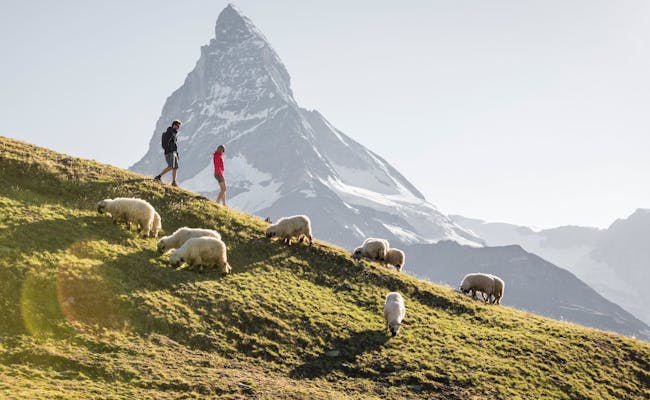
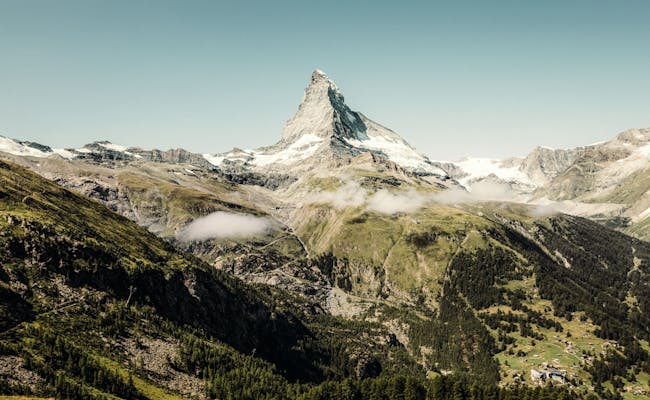
Start your day early in Zermatt and take the train to Brig. This journey is part of the Glacier Express, a scenic train ride connecting Zermatt and St. Moritz.
In Brig, you'll need to switch trains to head to Domodossola in Italy. The ride isn't particularly scenic as you'll spend most of your time in a tunnel, but that shouldn't bother you too much. The next leg of the trip from Domodossola to Locarno is much more beautiful. This might be one of the slowest trains you’ll ever ride, but rest assured, the next two hours will likely fly by.
The landscape is breathtaking from start to finish. Traveling through the Centovalli—meaning “hundred valleys”—you'll pass several charming villages with old stone houses. You'll also cross high viaducts and catch glimpses of one or two waterfalls.
Once you arrive in Locarno, you can spend the rest of the evening soaking up the Italian vibe with a scoop of gelato.
Since you’ll be spending the next three nights in Ticino, you'll be eligible for the fantastic Ticino Ticket. You get it when you check in at your accommodation. With this handy guest card, you can use public transport throughout Ticino for free. Additionally, it provides you with numerous discounts on other attractions and activities.
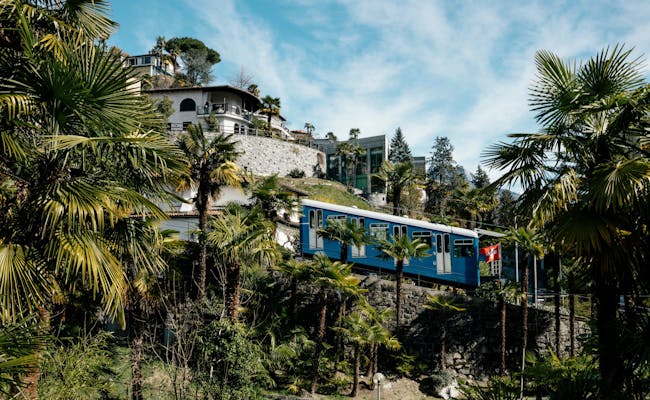
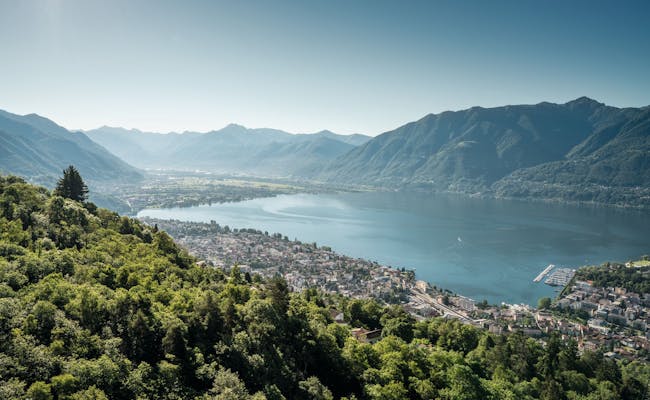
Get ready to explore the Italian part of Switzerland in all its glory. With so many activities to choose from, you won't be bored today.
First, we recommend heading to one of the two river valleys: Maggia or Verzasca. Both are perfect for hiking, spending time by the river, or taking a refreshing swim. Don't forget to pack your picnic! There are countless spots to take a break in both valleys. One of our favorite places is right beneath the famous stone bridge in Lavertezzo.
If you prefer calmer waters over cold mountain streams, consider heading to Lake Maggiore or Lake Lugano. Both lakes are stunning and offer more photo opportunities than you can imagine.
Other popular destinations in Ticino include the charming artsy town of Ascona near Locarno and the city of Lugano further south.
If you want to brush up on your Swiss geography, visit Swissminiatur in Melide just outside Lugano. It’s a miniature version of Switzerland, showcasing incredible attention to detail.
If you're one of those adrenaline junkies, at the end of the Verzasca Valley, there's the 007 Bungy. You might have seen this 220-metre jump in the James Bond film GoldenEye. If you decide to take the plunge from the dam, don’t forget to share your photos with us. We’d love to see them... 🙂
As you may have already noticed, this day is definitely not long enough to tick everything off your list. Good thing there's always tomorrow.
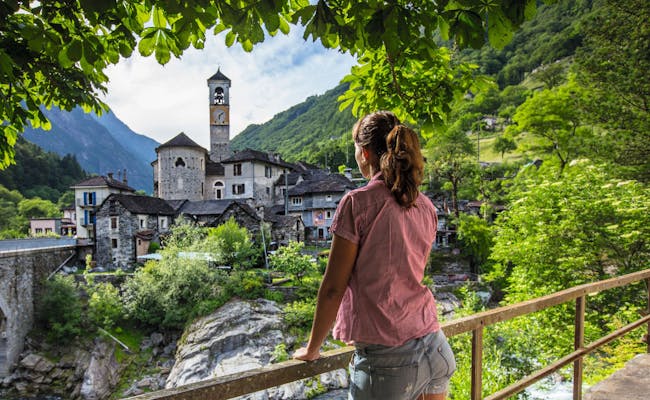
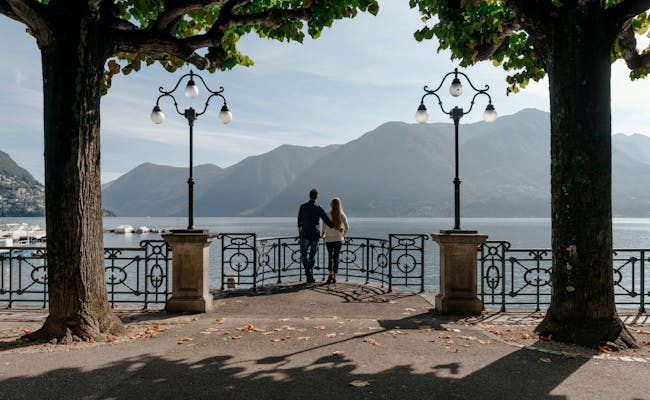
Knock yourself out doing whatever you missed out on yesterday. The list should be long enough to keep you busy for another day.
Not far from Lugano lies the idyllic Como region, the place where George Clooney and other celebrities got married. If you’re curious to find out what Mr. Nespresso saw in this part of the world, today’s your chance.
The two main places we recommend visiting in the area are the city of Como and the village of Menaggio. Both are situated by the shores of Lake Como and will automatically make you take a step back and enjoy the laid-back atmosphere.
At the end of the day, head back to Switzerland and spend whatever time you have left hanging out in Locarno before moving on to Lucerne tomorrow.
If you're visiting Switzerland between April and October, you’re in luck. If you don’t leave Ticino on a Monday, you can take the Gotthard Panorama Express to travel back over the Alps. Head to Bellinzona in the morning to catch your train.
On the first leg of this journey, a panoramic train will take you through the old Gotthard Tunnel to Flüelen. Before the Gotthard Base Tunnel opened in 2016, this was the only way to reach Ticino by train. Since the opening of the longest tunnel in the world, the old tunnel is now only used for tourism.
In Flüelen, enjoy a three-hour boat ride on Lake Lucerne. You'll arrive in Lucerne around 3:00 PM, right next to the train station. This gives you plenty of time to explore this charming city and its surroundings. If you can’t take the Gotthard Panorama Express to Lucerne, just hop on a regular train to Lucerne instead.
Spend the rest of the evening discovering Lucerne. Stroll across the Chapel Bridge, wander through the Old Town, relax by the lake, or visit the Glacier Garden with its famous Lion Monument.
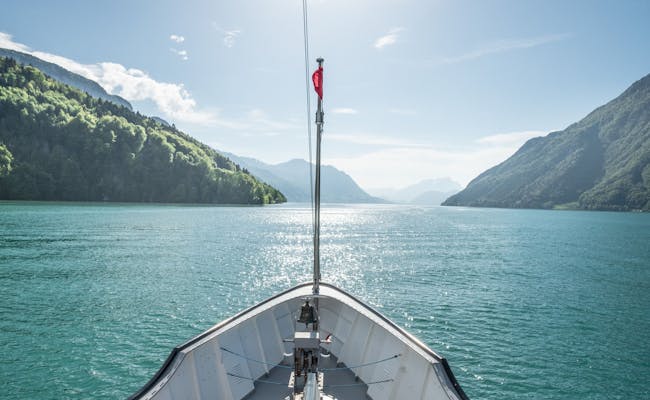
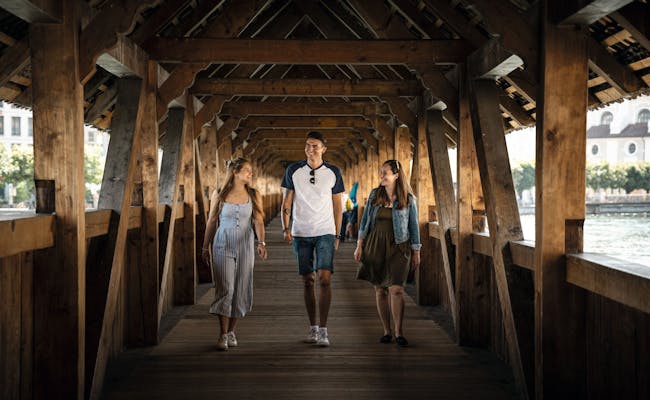
Lucerne has so much to offer. One of the most exciting excursions is the ride on the world's steepest cogwheel railway up to Pilatus, Lucerne's local mountain. This train only operates in the summer from Alpnachstad, while the cable car from Kriens goes to Pilatus all year round.
Speaking of mountains: Titlis is another landmark in the region that's worth a visit. From Engelberg, you can reach the summit using two gondolas. One of them is the world's first rotating aerial cable car, offering you an impressive 360-degree view.
For an easy hike that includes a ride in a rocket-like elevator that's 152.8 meters high, you can take a boat or bus to Kehrsiten-Bürgenstock.
Don't forget about the Stanserhorn, a mountain near Lucerne served by a modern double-decker cable car. It's best to take the boat to Stansstad. Here, you change for the first leg on the funicular and then ride the open-air gondola to the Stanserhorn.
You could also theoretically go to Interlaken on this free day. Leave Lucerne in the morning with the Golden Pass Line, spend the day exploring the picturesque region around Interlaken, and then return to Lucerne in the evening.
Another great option for spending the day around Lucerne is a boat ride on Lake Lucerne. Several steam and passenger ships operate on the lake, taking you on a scenic excursion.
As you can see, Lucerne has a lot to offer on a sunny day. But in reality, the weather isn't always that promising. In that case, we've got some cool indoor options for you.
For one, there's Aeschbach's Chocoworld in Root. The bus ride there takes about 30 minutes. Nothing brightens a rainy day quite like delicious chocolate, right?
In Hergiswil, not far from Lucerne, you can find what the Swiss lovingly call the "Glasi." The Hergiswil Glass Factory takes you through the glass-making process, lets you watch the professionals at work, and even offers you a chance to try your hand at glassblowing. When was the last time you made your own glass?
Another option for bad weather is the Swiss Museum of Transport in Lucerne. As the name suggests, this museum is all about transportation. From bicycles to astronautics, it has everything.
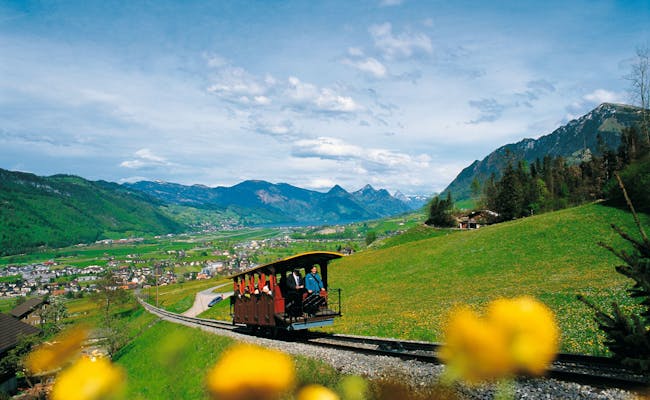
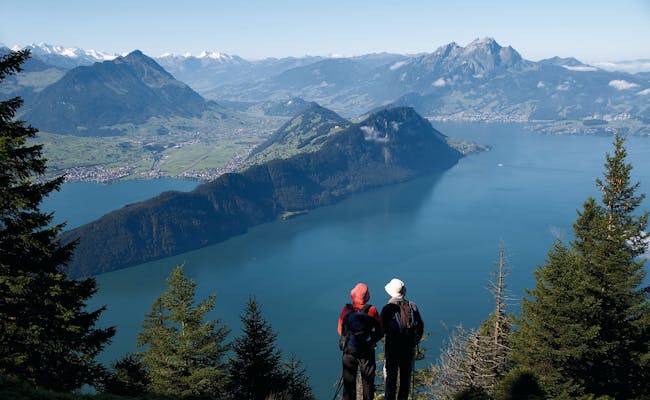
Fortunately, you don’t have to rush today and can enjoy Lucerne until the afternoon or even the evening. You have plenty of time to do all the things you didn’t manage yesterday.
A popular day trip from Lucerne is a quick visit to Rigi. To get there, you can either store your luggage at your accommodation in Lucerne or at the train station, and then take the train to Arth Goldau. From there, the Rigi Bahn - Europe’s first mountain railway - will take you to the Rigi Kulm mountain station in a 45-minute ride.
If Rigi isn’t shrouded in clouds, you’ll have a stunning view of the Alps, Lake Lucerne, and other surrounding lakes. Just follow the signs to the viewpoint after getting off at Rigi Kulm.
Once you’ve taken enough photos, you can either take a break at the restaurant, ride the train down to Vitznau, or go for a hike. With over 120 kilometers of hiking trails, you have plenty of options to choose from.
Upon arriving in Vitznau, the passenger boat back to Lucerne will be waiting for you. Keep your camera ready, as the ride is very scenic and offers even more breathtaking views.
Back in Lucerne, you’ll pick up your luggage and head back to Zurich.
And this concludes our collection of two weeks itineraries for Switzerland. We hope you’ve been able to find the Switzerland itinerary to your taste. Have fun planning your trip.